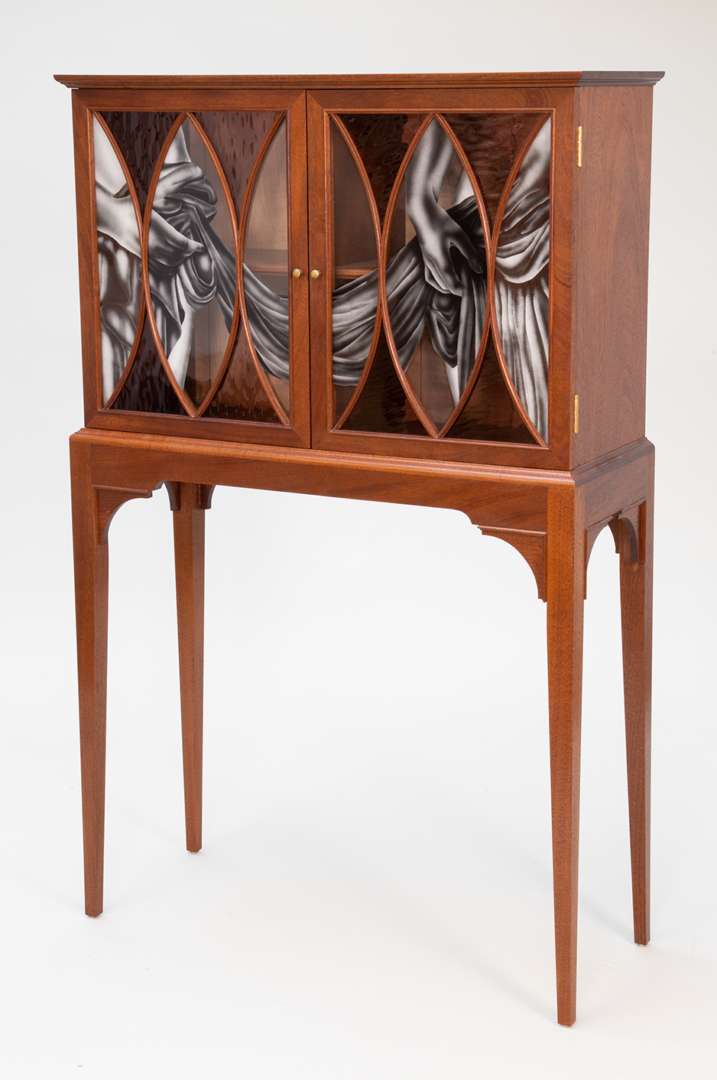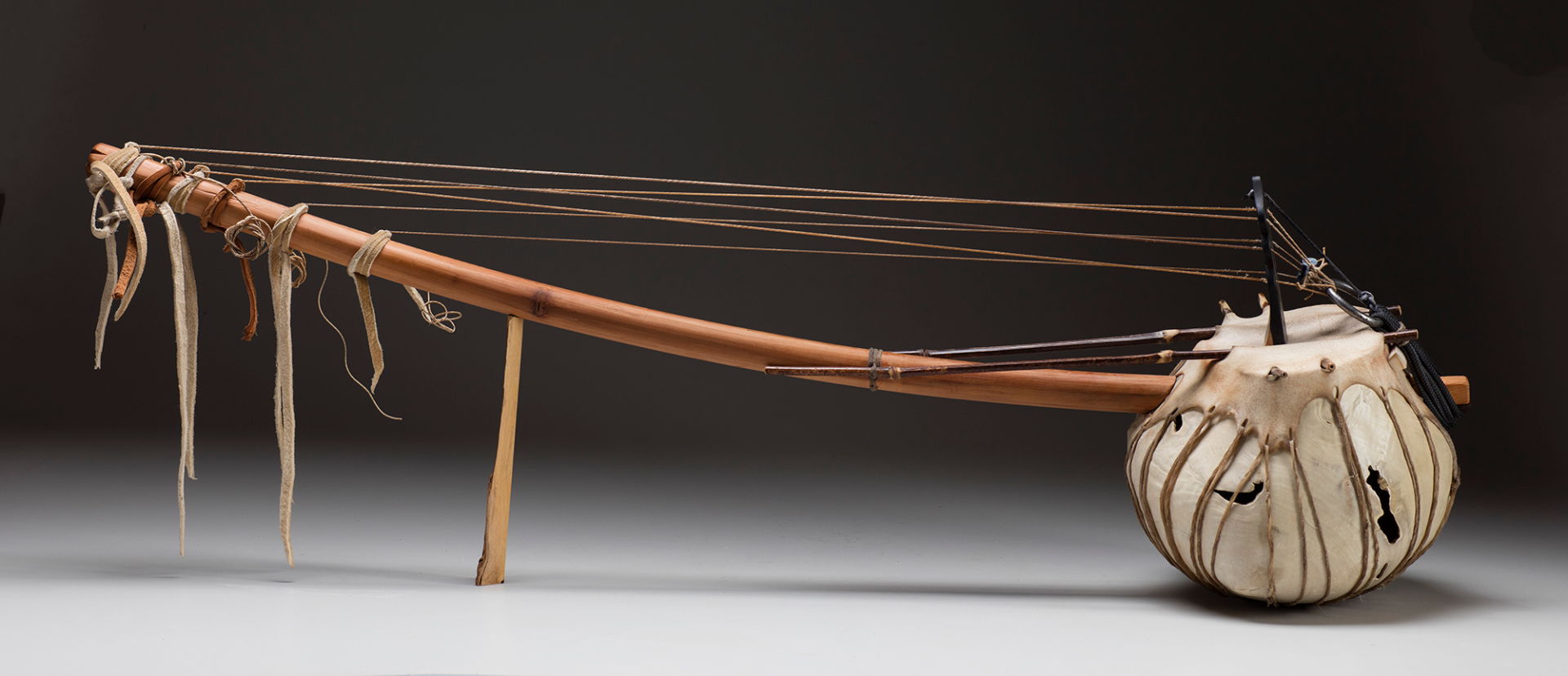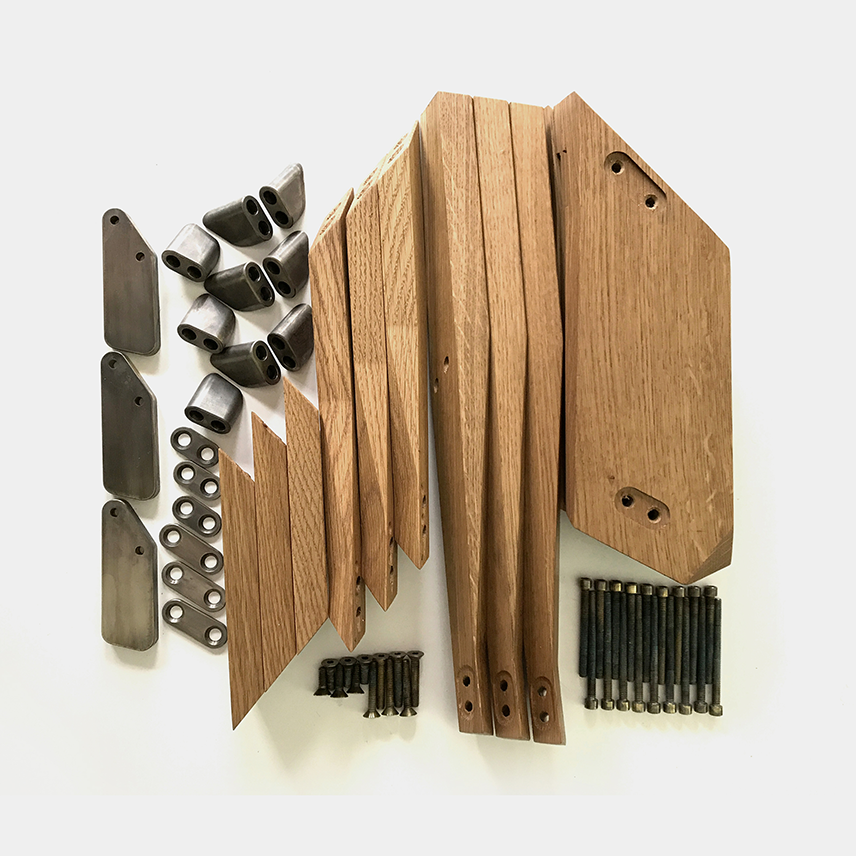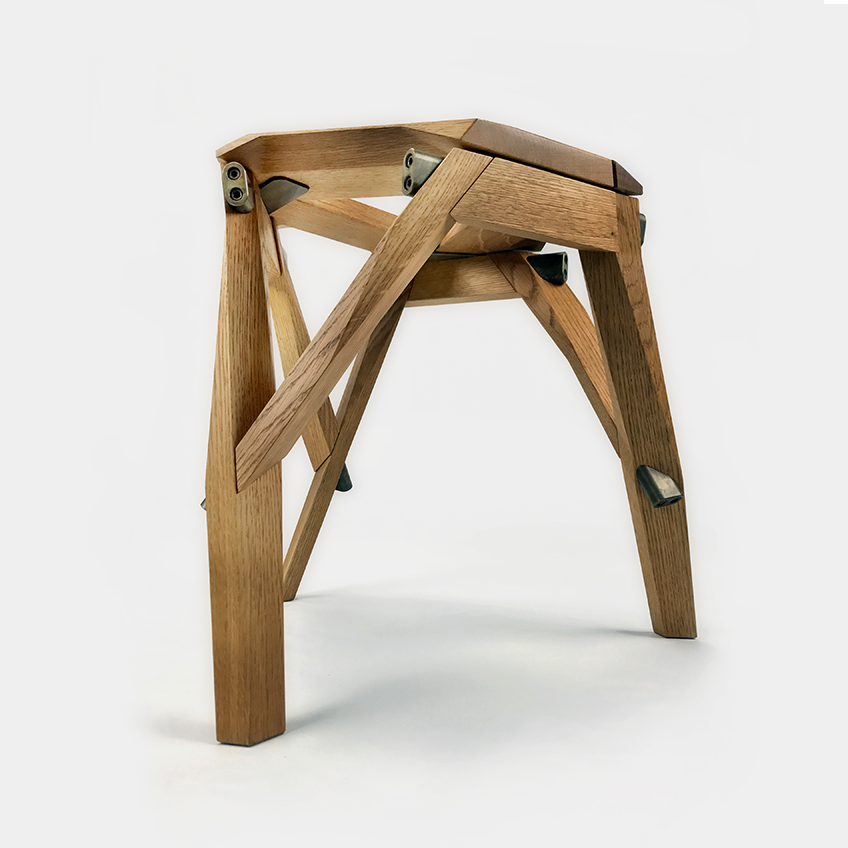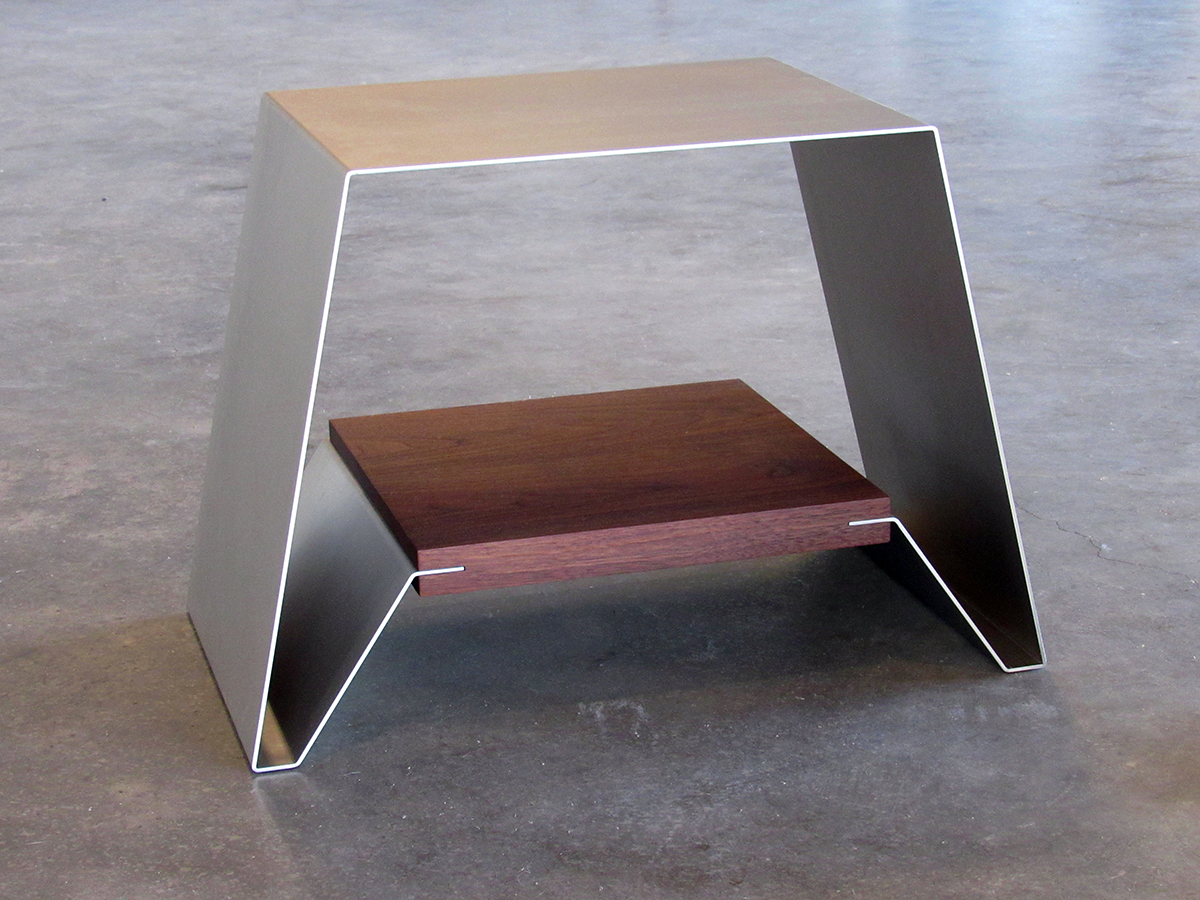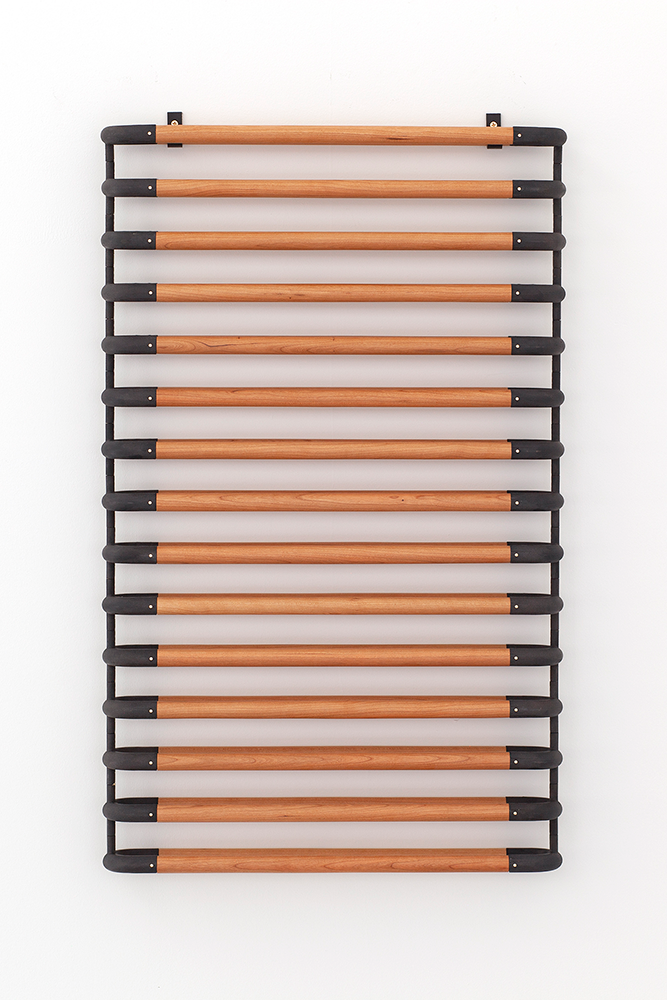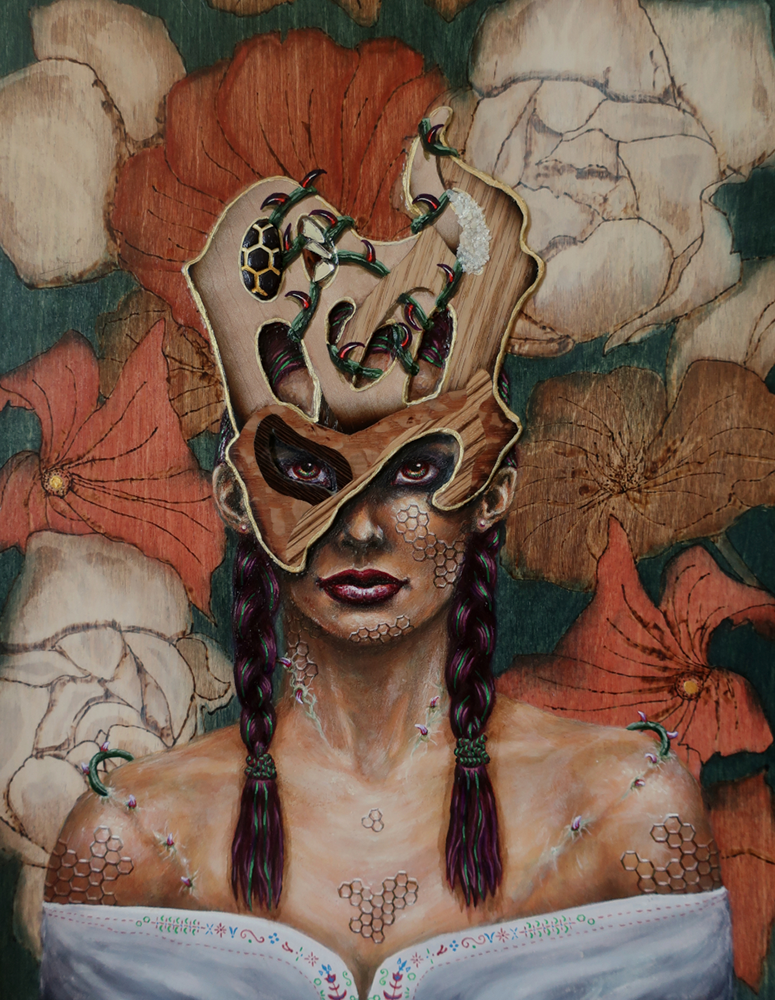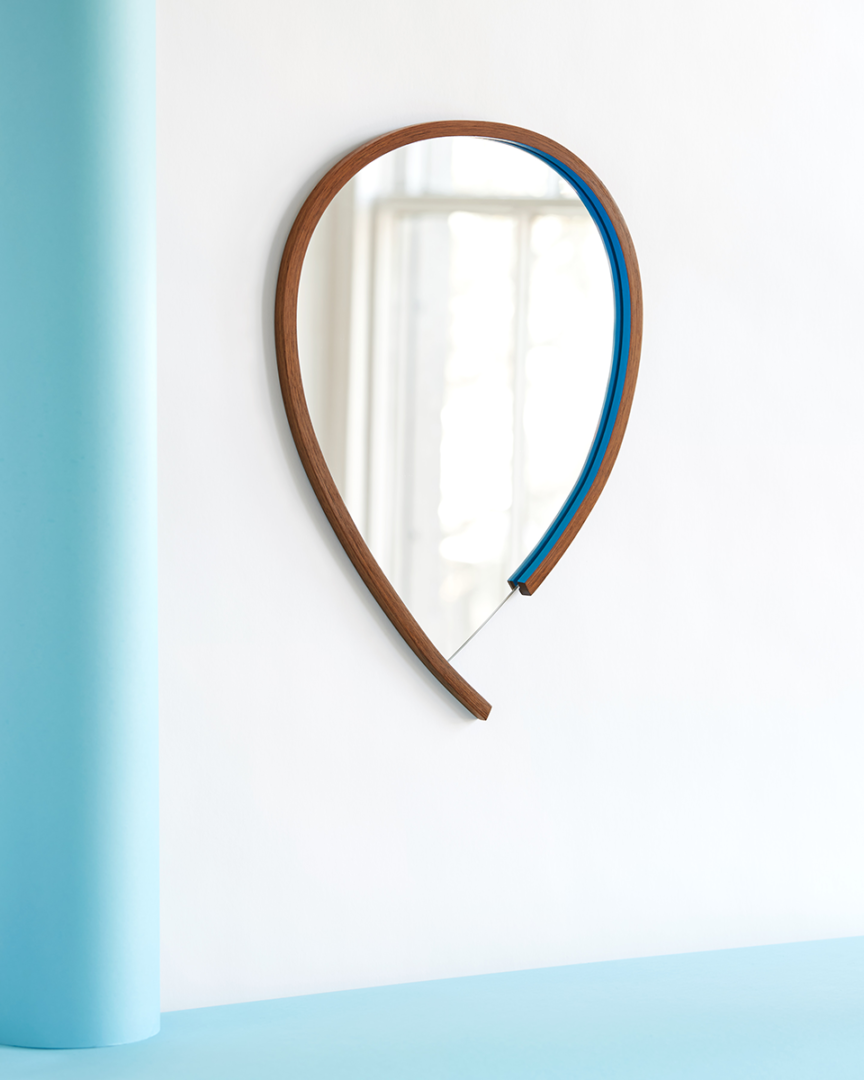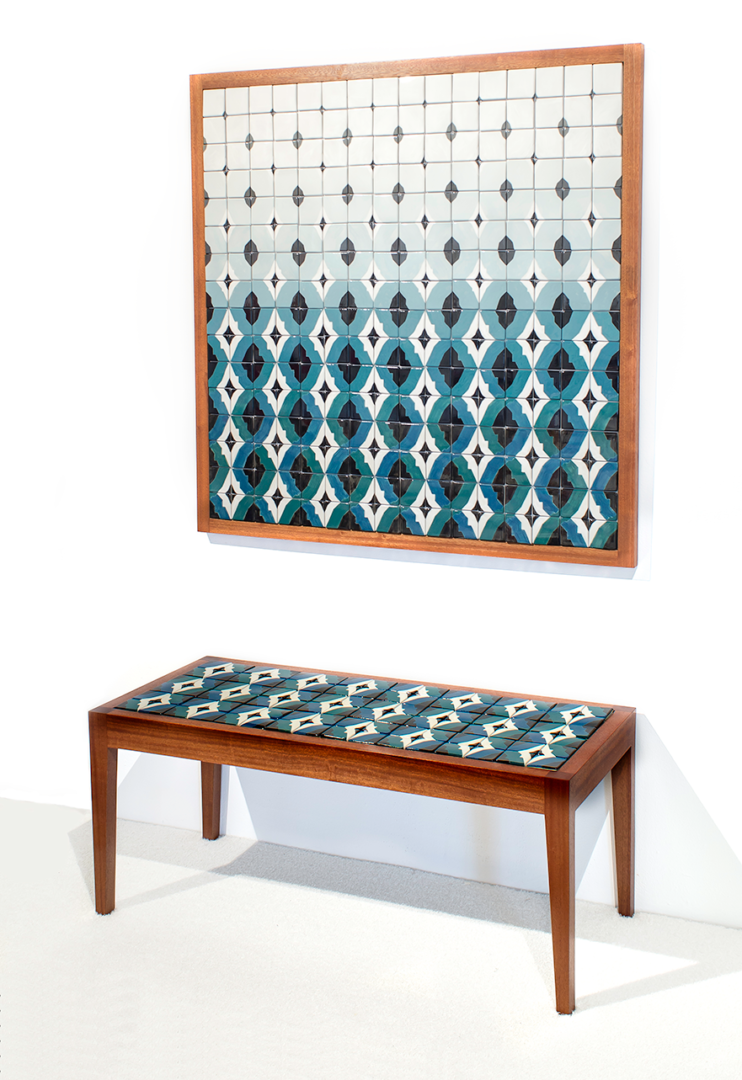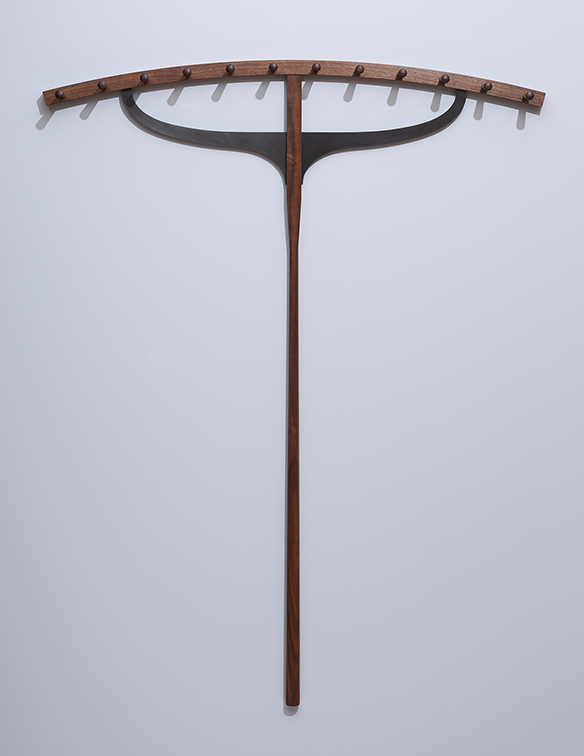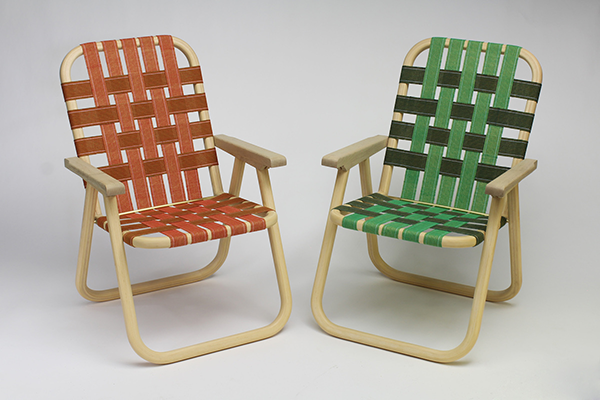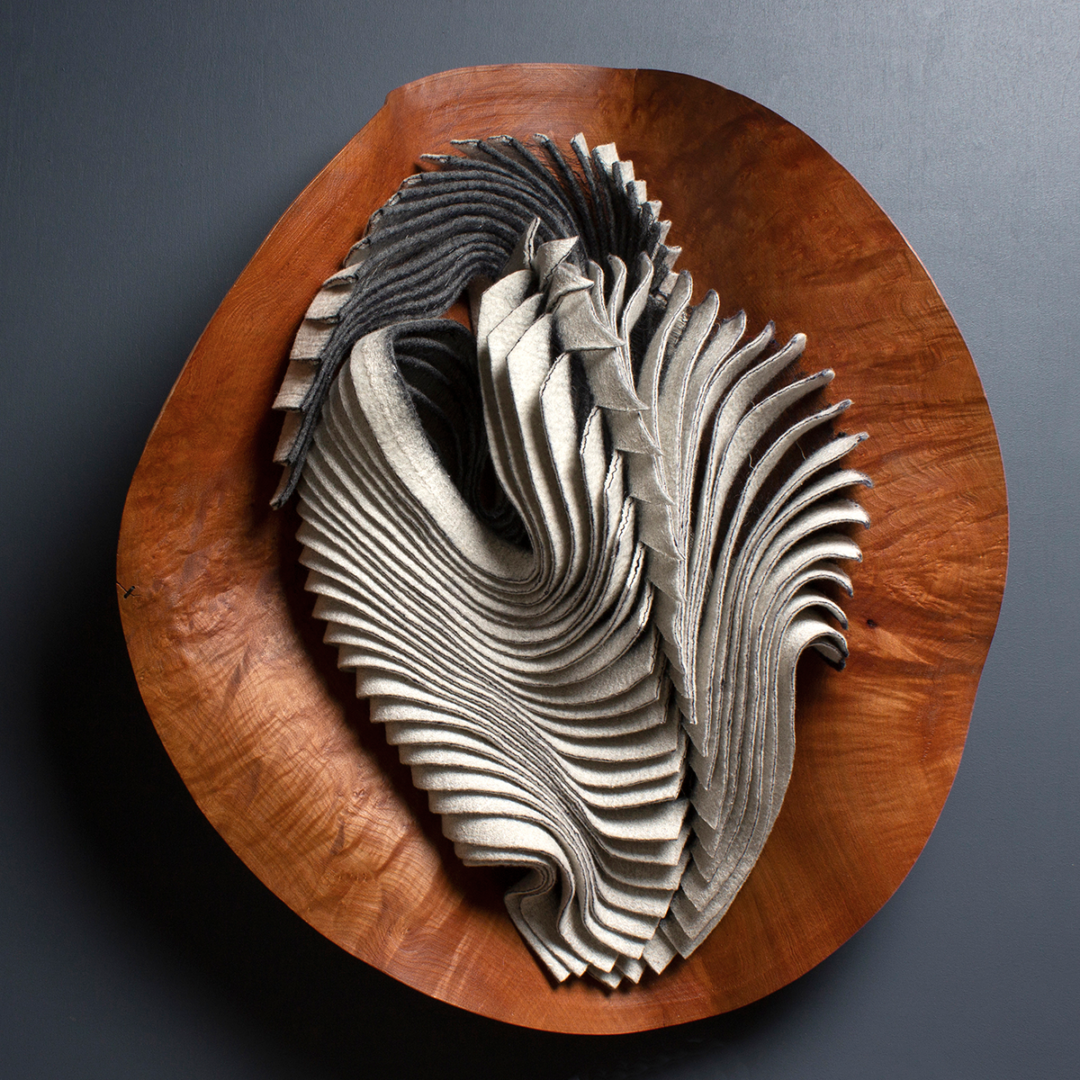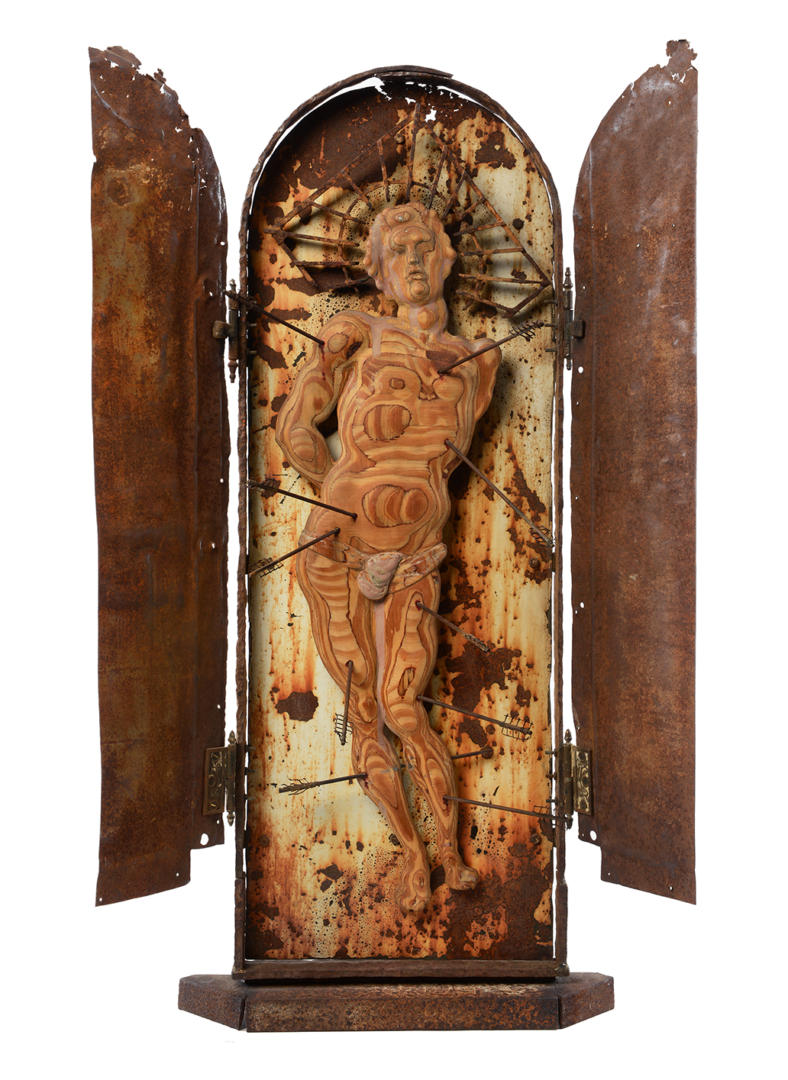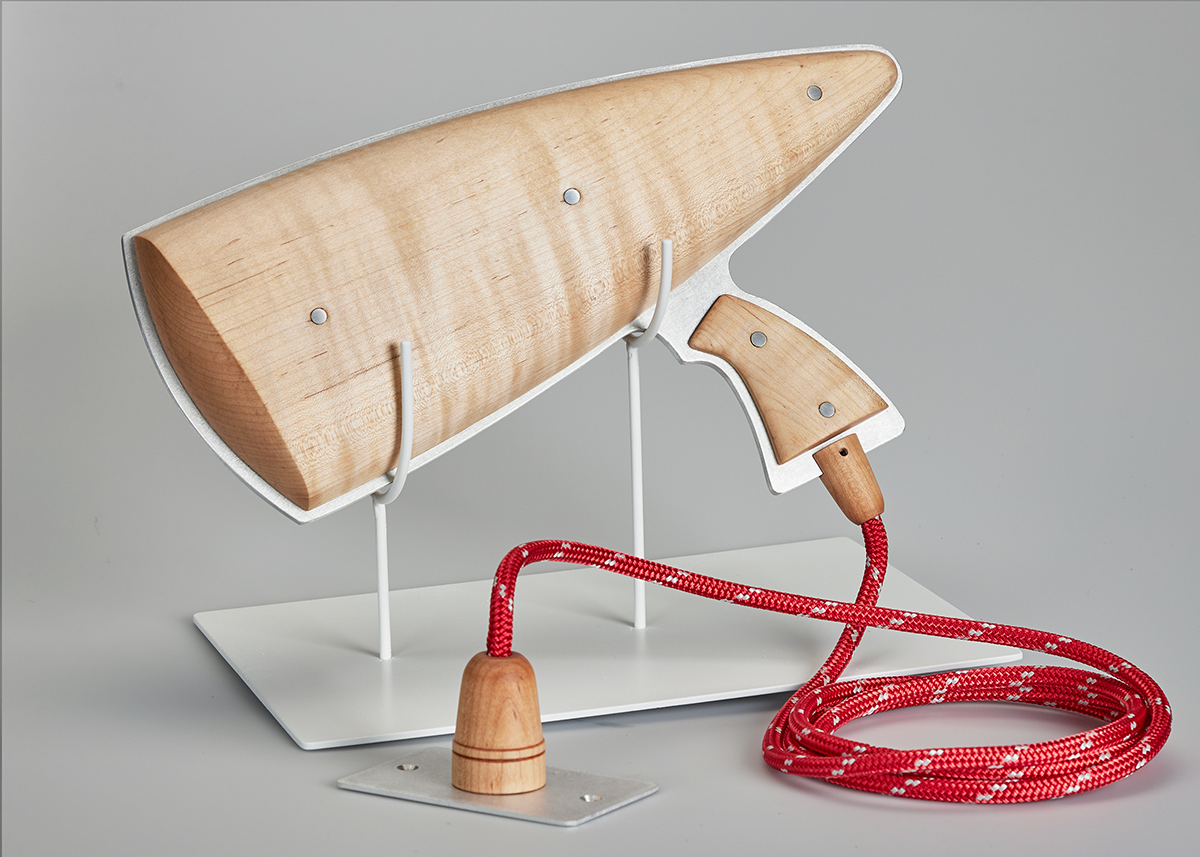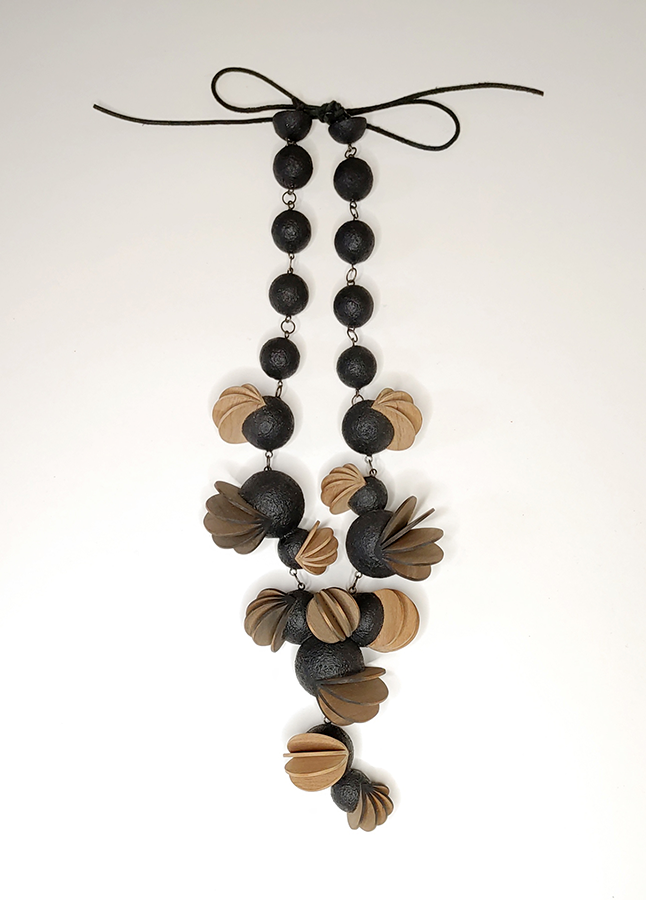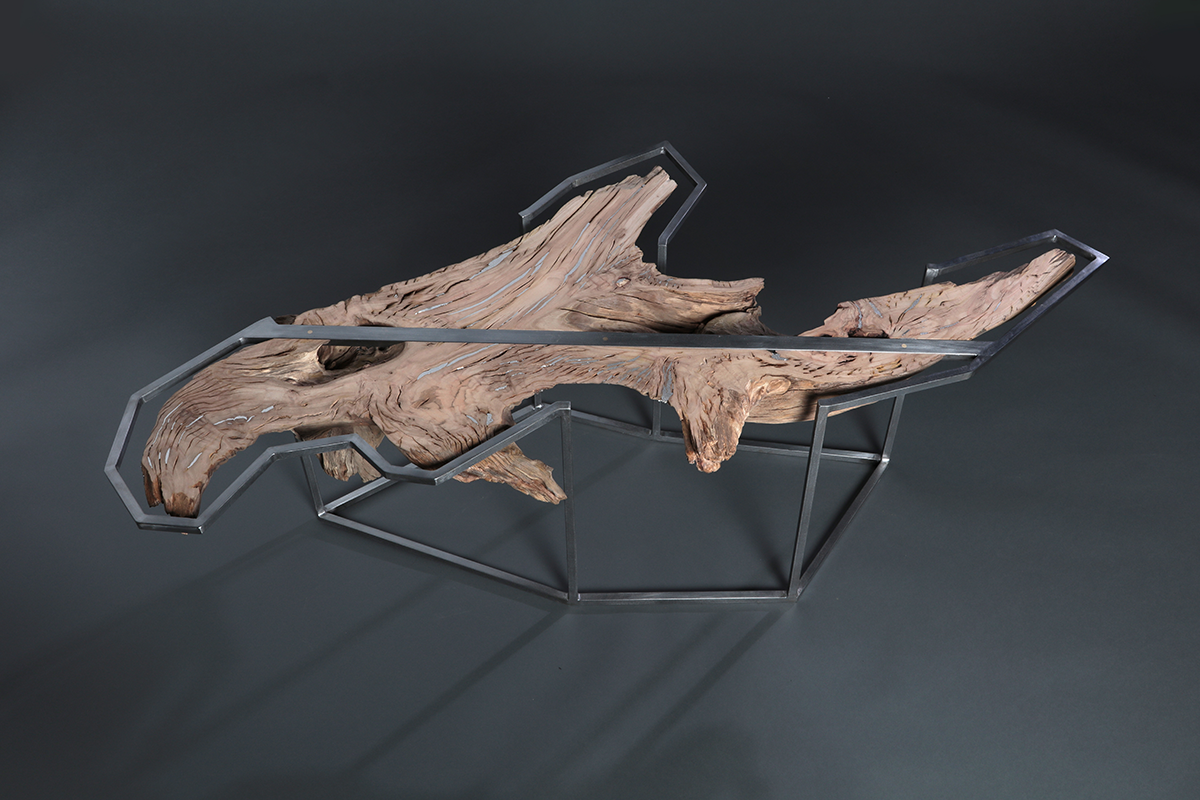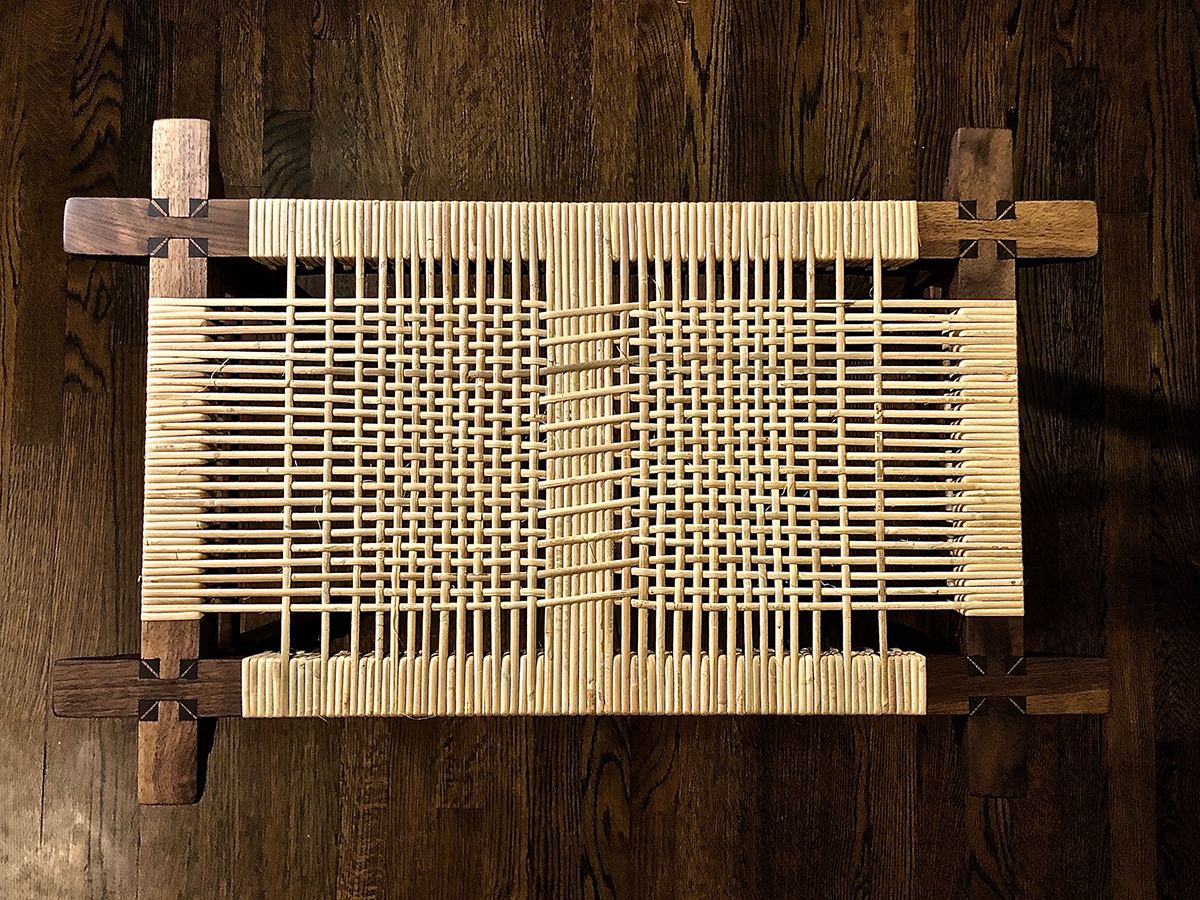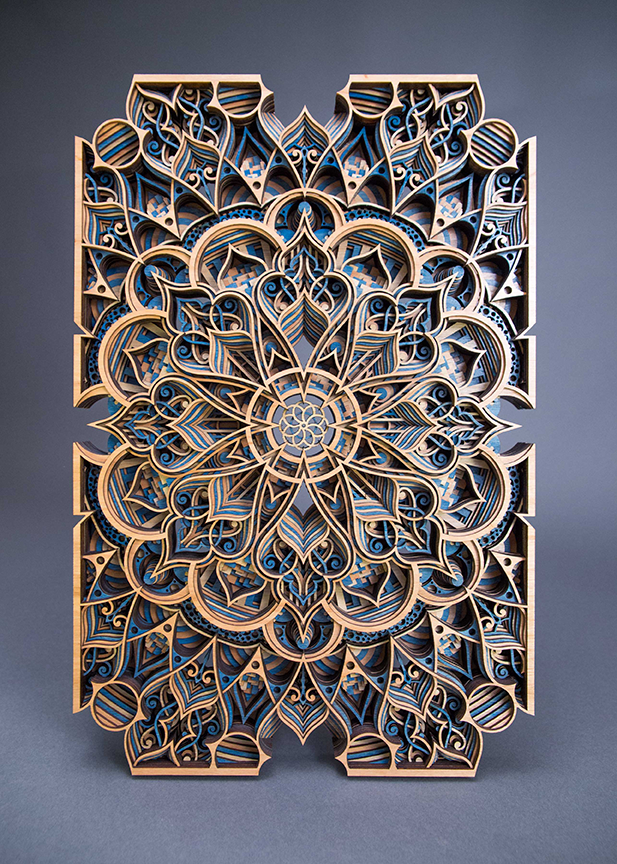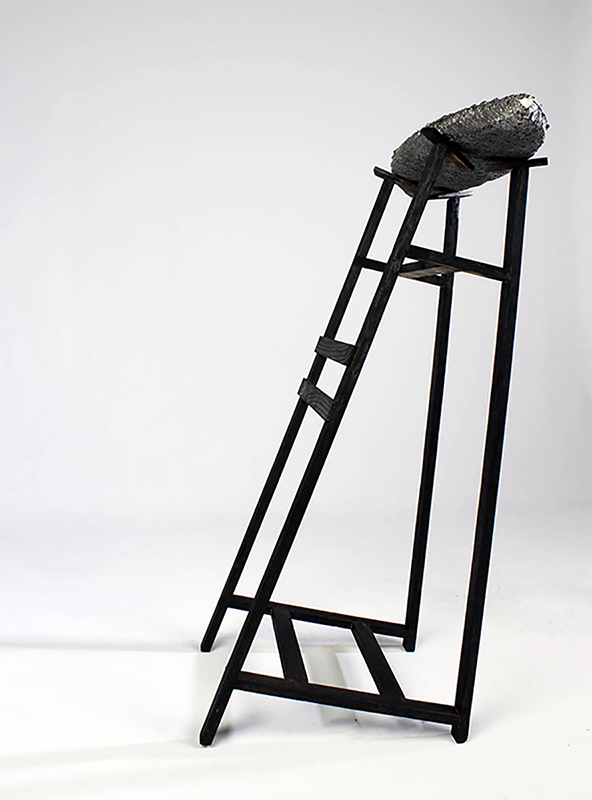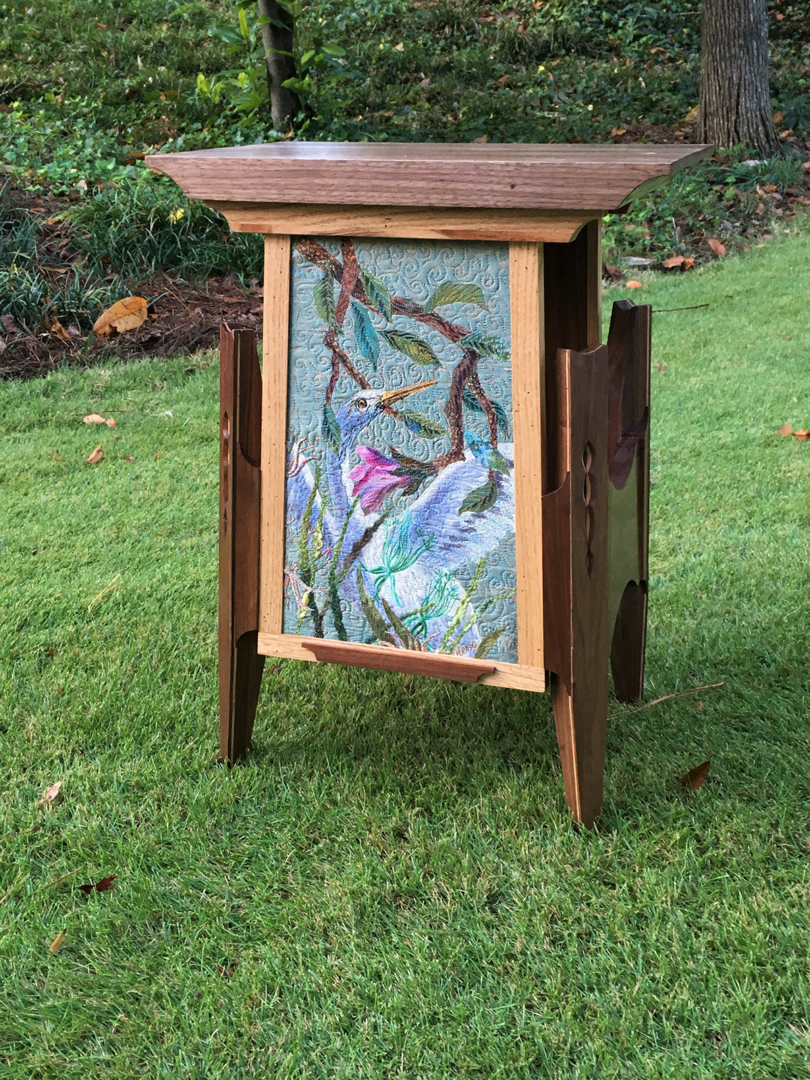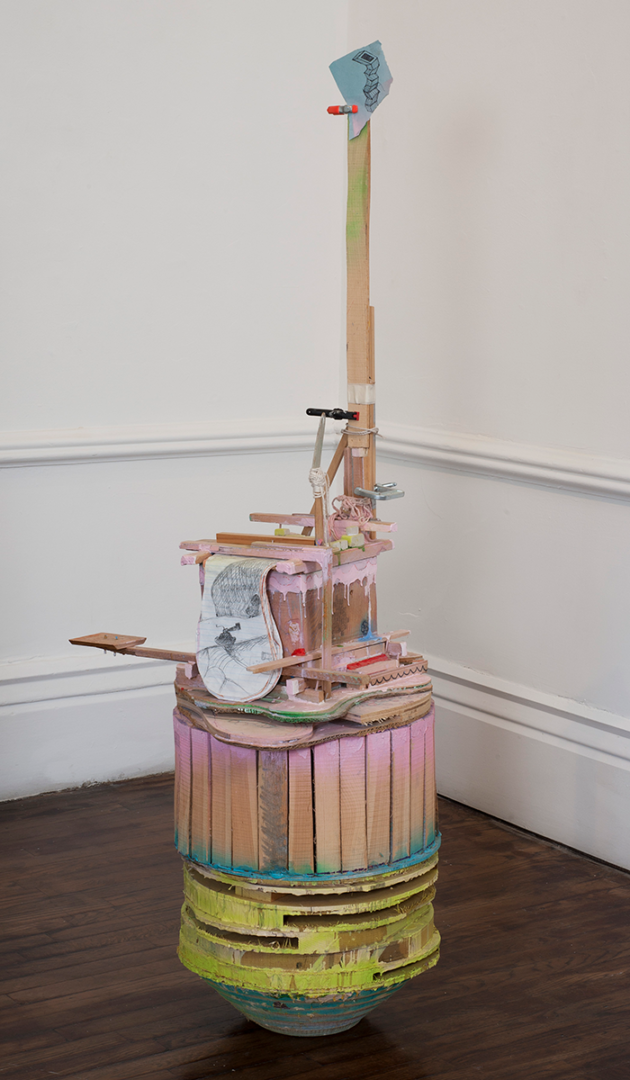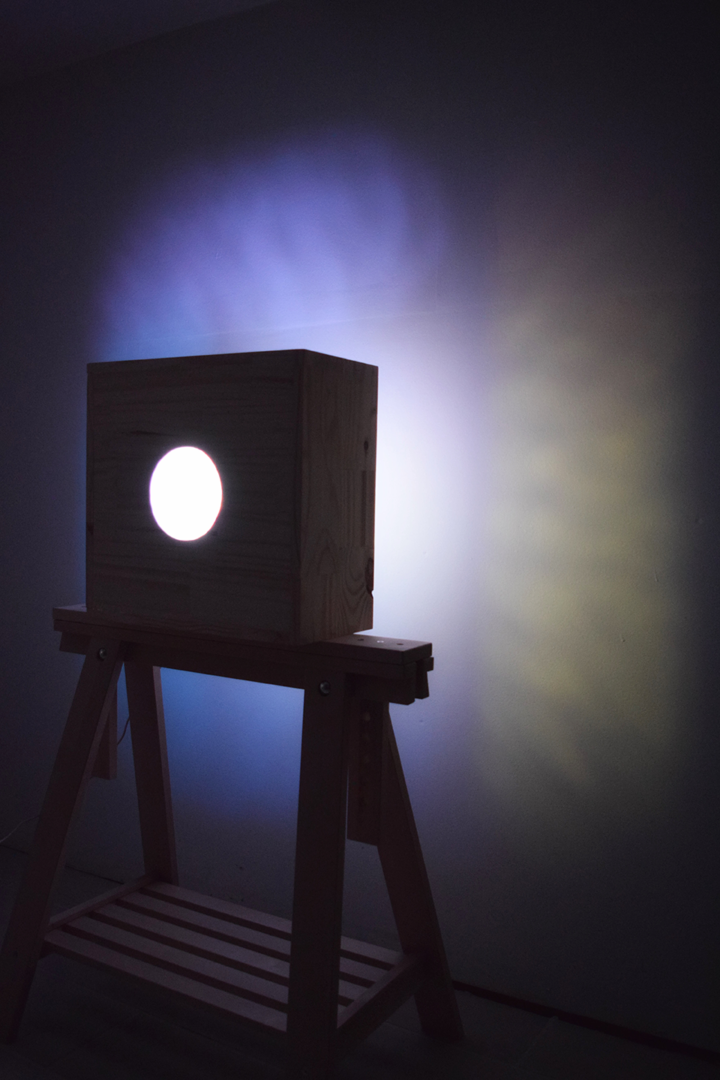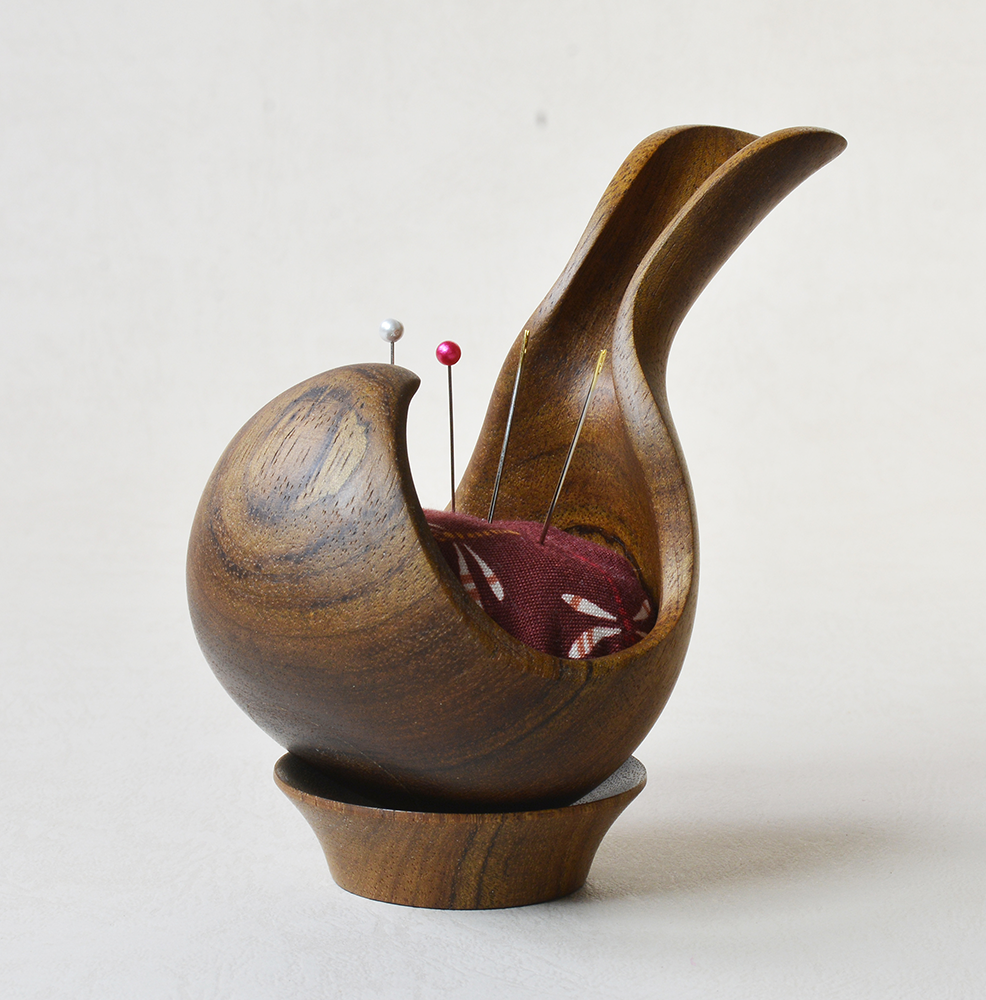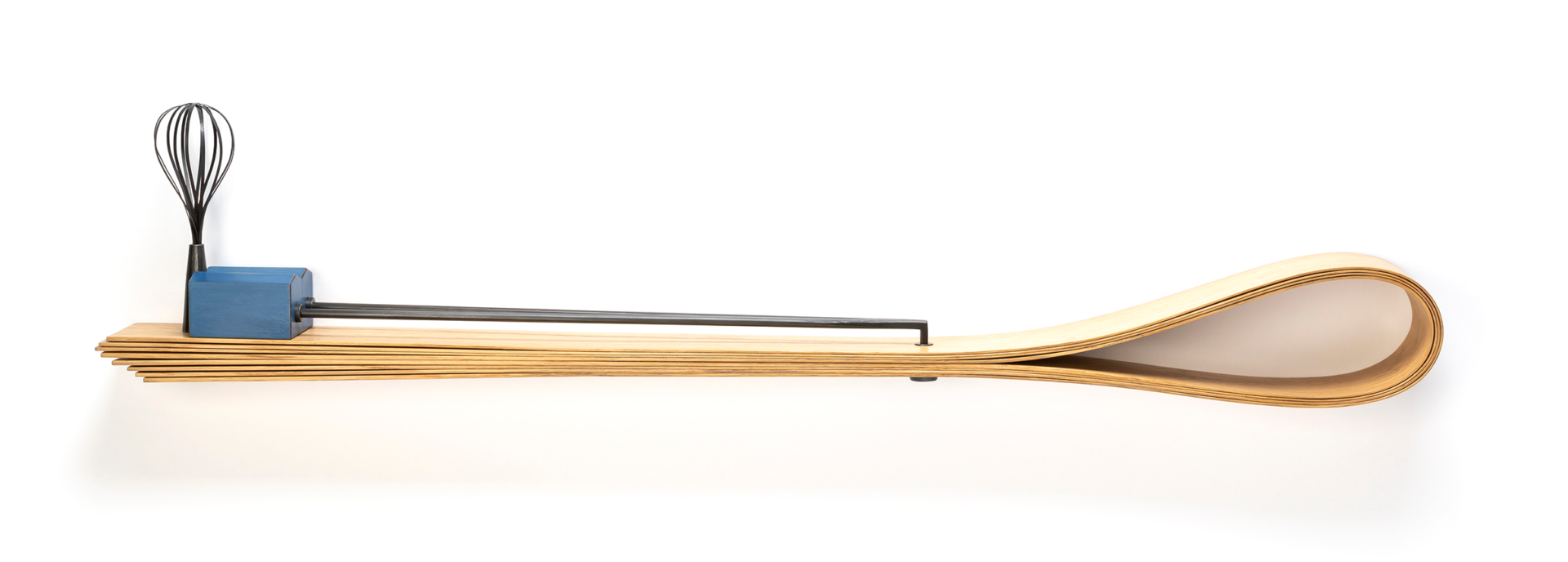Wood And…
27th Annual Juried Woodworking Exhibition
May 14, 2021 – Sept 12, 2021
In 1994, the Annual Juried Woodworking Exhibition at the Wharton Esherick Museum began as an opportunity to encourage new, creative, and imaginative works in wood. Encouraged to think like Esherick, over the years professional woodworkers, artists, designers, hobbyists, and craftspeople have submitted hundreds of pieces reflecting each year’s theme. For the 27th year of the exhibition, WEM invited applicants to share innovative works of art, craft, and design showcasing wood and at least one other medium, reflecting the way Esherick worked with a wide variety of materials, often in combination. The selected works are featured below alongside information about each artist, along with a publication that can be downloaded for free or purchased in a print edition.
The finalists for Wood And... were selected by jurors Miguel Gómez-Ibáñez and Samantha De Tillio, along with Emily Zilber, WEM’s Director of Curatorial Affairs and Strategic Partnerships. Miguel Gómez-Ibáñez is a furniture maker and President Emeritus of the North Bennet Street School in Boston (2006-2019). Samantha De Tillio is a curator and writer specializing in modern and contemporary craft. De Tillio is the Curator of Collections at the Museum of Arts and Design in New York and a Contributing Editor for GLASS: The UrbanGlass Art Quarterly.
First Place: Aspen Golann
Aspen Golann, Partially Draped Cabinet, 2019. Solid mahogany, bent laminated bars, hand enameled glass, brass hardware, finished with super blonde shellac, 50 x 48 x 18 inches.
“I use inlay, marquetry, glass enameling and other traditional styles of image making to create contemporary pieces with classical roots… This piece blurs the line between furniture and figure sculpture — in this cabinet, the positioning of the female bodies and loose cloth transform the act of opening the doors into a disrobing. Merely by using the cabinet as intended, the user disrobes the figures and enters the internal space of the cabinet. The draped cloth imagery plays on classical early American Samuel McIntire carvings that typically feature cloth hanging in catenary curves. The intent is to combine iconic decorative motifs with a functional cabinet form to explore female objectification, overuse, domestic labor, and sexuality.”
Aspen Golann is an artist and studio furniture maker, currently living in Penland, North Carolina where she runs the Wood Studio at the Penland School of Craft. She specializes in 17th & 18th century style furniture which she blends with a background in fine art, sculpture, and textiles.
Second Place: Christian Burchard
Christian Burchard, Riff on a Donso Ngoni (Mali), 2018. Bleached madrone root, yew, blackwood, bamboo, rawhide, leather, shell beads, steel ring, goat gut strings, 11 x 40 x 9 inches.
“I have been working with wood for most of my life. We are comfortable with each other, have a close relationship, and I value the connection immensely. I am curious what is inside, how it works. I am always looking for the gifts it has to offer. At times I am awed by its beauty and the story of its history, the tracks that passing of time have left. I am driven to expose this beauty, to make it shine. At other times, I am more fascinated with its inner structure, its more subtle form and spirit.”
Born in Hamburg, Germany in 1955, Christian Burchard has been living in the United States since 1978. Starting out as a furniture maker’s apprentice in Germany in the mid-seventies, he studied sculpture and drawing at the School of the Museum of Fine Arts, Boston, then at the Emily Carr College of Art and Design in Vancouver. He currently resides on the outskirts of Ashland, Oregon.
Third Place: Jason Turnidge
Jason Turnidge, Factory Low Stool, 2016. White oak in oil and bronze in pewter patina, 18 x 15 x 15 inches.
“I test the effects of contemporary manufacturing technologies and explore post-industrial craft through modular furniture. I examine the domestication of factory-based machinist techniques to make tools for contemporary life.”
Jason Turnidge founded Turnidge Industries in 2016 as a design and manufacturing studio. Prior to establishing his studio, Jason worked as an architect with Westlake Reed Leskosky / DLR Group from 2012-2016 and as a Design/Maker at Thom Stauffer Architects from 1997-2008 where he participated in teams that developed work that has been recognized regionally and nationally with numerous AIA and design awards. Turnidge received his Bachelor of Architecture degree from Kent State University and, in 2002, he received a Master of Architecture degree from the University of Pennsylvania. He is adjunct faculty in architecture at Kent State University.
Learn More
Click on the tabs below to learn more about each artist featured in the 27th Annual Juried Woodworking Exhibition.
1908 Design, Spangen Stool, 2018. Western black walnut and aluminum, 18 x 25-3/4 x 15 inches.
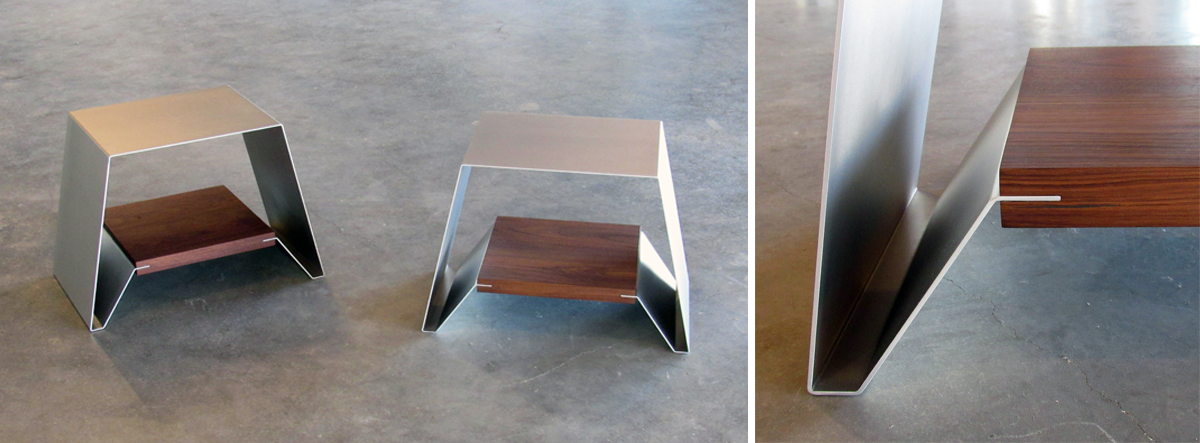
Artist Statement:
We draw upon our interest in craft, our education in fine arts, and our experience in architecture. We are curious about how different materials join and how they complement and strengthen each other. While our expertise is rooted in working with wood, we engage with a variety of other specialized crafts people to realize our creations. We enjoy exploring new ideas, developing prototypes, and building unique pieces.
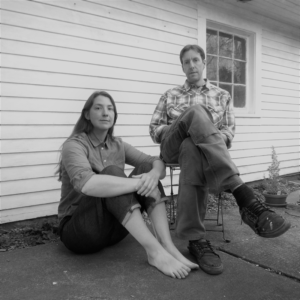
Based in Portland, Oregon, 1908 is a design and fabrication practice focused on the development and production of furniture run by Jeff Tummelson and Sina Meier. Jeff has an MA in Architecture from the University of Pennsylvania and a BFA from Michigan State University. Sina holds an MA in Architecture from the University of Oregon and a BA in Sculpture from Portland State University.
nineteen08design.com | Instagram: @1908design
Kailee Bosch, Tube Sculpture, 2020. Cherry, bronze, brass, 32 x 19 x 3 inches. Photography (left) by Del Harrow, details (right) by Kate Osborne.

Artist Statement:
I make functional objects and speculative designs. I think about how the process gives shape to formal elements. I seek an interplay between traditional ways of making, such as the wood lathe and bronze casting that value the hand, and digital technologies, such as 3D printing which allow for precision and rapid repeatability.
My current body of work explores two materials, wood and bronze. I’m interested in wood for its continual push at precision, movable only with the right technique and tools. Bronze, while not easily moveable in its solid form, when heated, transforms into a beautiful, viscous liquid that can be endlessly molded.
Kailee Bosch is from Fort Collins, Colorado. She obtained her Bachelor of Fine Arts (BFA) in Sculpture and Pottery from Colorado State University in 2020. Her work has been included in numerous juried and group exhibitions. She has been a demonstrator and instructor for the youth turning program at the National AAW Conference in Kansas City, MO and Portland, OR, teaching youth 10-18 about woodturning. She was also selected as a Windgate ITE Student Resident at the Center for Art in Wood in 2021.
kaileebosch.com | Instagram: @kailee_bosch_art
Christian Burchard, Riff on a Donso Ngoni (Mali), 2018. Bleached madrone root, yew, blackwood, bamboo, rawhide, leather, shell beads, steel ring, goat gut strings, 11 x 40 x 9 inches. Photography by Rob Jaffe.

Artist Statement:
I have been working with wood for most of my life. We are comfortable with each other, have a close relationship, and I value the connection immensely. I am curious what is inside, how it works. I am always looking for the gifts it has to offer. At times I am awed by its beauty and the story of its history, the tracks that the passing of time have left. I am driven to expose this beauty, to make it shine. At other times, I am more fascinated with its inner structure, its more subtle form and spirit.
To be working this closely with nature is a blessing, but also, often, overwhelming. It is a struggle. At times I find myself needing to put my foot down, to control the outcome of my work, only to find that I trampled something beautiful. At other times I feel overwhelmed, scared: what is needed of me here, how can I match the beauty of this living thing? How am I to know when to be loud and when to be quiet…? Maybe this stuff just matches my personality, something to wrestle with, something that stirs my imagination, something to control. That nature versus man-made thing, that struggle, that tension, that conflict.
My work is about my relationship with nature, my desire to connect with it on a deep level. Trying to get under its skin and be part of it. Searching, finding something sacred, adding my touch, wrestling with it. Showing the beauty of it under a different light: exposing, transforming. I make things out of a deep urge to create and out of a driving curiosity.
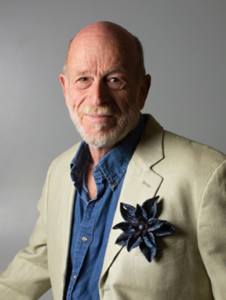
Born in Hamburg, Germany in 1955, Christian has been living in the United States since 1978. Starting out as a furniture maker’s apprentice in Germany in the mid-seventies, he studied sculpture and drawing at the School of the Museum of Fine Arts, Boston, then at the Emily Carr College of Art and Design in Vancouver. He currently resides on the outskirts of Ashland, Oregon.
burchardstudio.com | Instagram: @chburchard
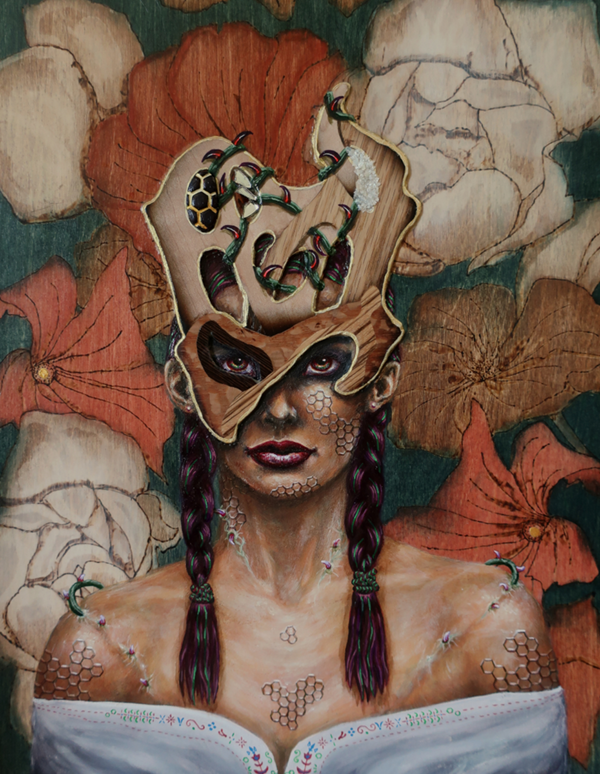
Jackie Cassidy, Nature’s Emissary, 2020. Hand-cut wood veneer marquetry, wood stain, pyrography, acrylic, clay, mother-of-pearl flakes and mirror on panel, 18 x 12 x 1-1/2 inches.
Artist Statement:
My paintings and mixed-media marquetry works act as a barometer for my own desire to discover eclectic landscapes and figures that negotiate the boundary between our reality and the fantastical, the unsettling, the sublime. The act of image-making is my way of externalizing the forest of my dreams. I’m always searching the natural world for stories that exist in secret and in plain sight. Through daily research, many of my paintings translate this natural phenomena into something that is at once alien and terribly, terribly human.
Jackie Cassidy is a painter and mixed-media marquetarian living and working in southern New Jersey. She is mostly self-taught, having graduated in 2010 with her M.A. in Writing from Rowan University. She has since exhibited at numerous galleries and institutions, and her work exists in collections in the U.S., U.K., and France.
jackiecassidyart.com | Instagram: @jackie_cassidy_artist
Kate Davidson, Loop, 2019. Walnut veneer, mirror glass, paint, 20 x 12 x 5/8 inches. Photography by Lauren Mazzotta.
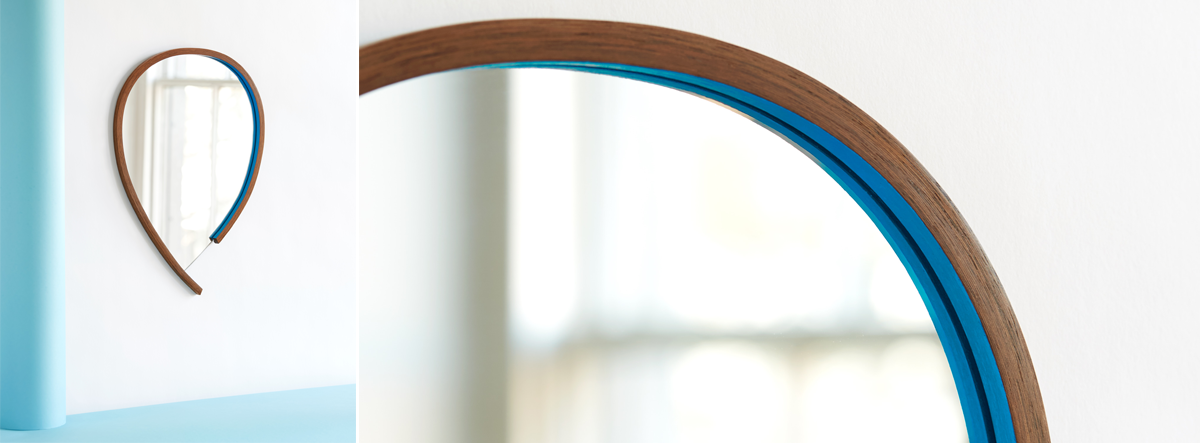
Artist Statement:
The inherent functionality of craft gives it power in the home. We are rarely meant to touch classical art, but craft – whether it be a table, quilt, or bowl – encourages interaction and use. I build sculptural furniture centered around tension and balance. A piece of furniture not only provides physical boundaries and structures within a room, but can reflect playfulness, intensity, or calm. As a woodworker, I have the power to build these functions and feelings into my environment.
Design is always my first step. Graphic and linear, my initial forms are bold and geometric. Through small changes I transform these ordinary shapes into three dimensional objects, introducing a unique set of rules that governs each work and continues to apply as the design grows and changes. This internal logic guides each new decision and potential change I make. It may involve a repeating set of measurements, a ratio between dimensions, or a hierarchy of parts. But while the shapes of the piece might become irregular, these rules mean that they do not become random. I want the details to feel like calculated parts of a larger mathematical equation, one that is complex but inherently solvable.
Using thin lines of wood, almost like wire, I make borders that delineate space. By filling these shapes with different media I control their weight and directionality. The bend of a curve or a grain pattern can push the eye and the energy one way or another. A sudden pop of color, change of angle, or transition of material can arrest or divert this motion, causing tension to bottle up, explode, or simply melt away.
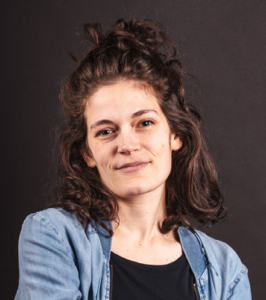
Kate Davidson is a wood-based artist who incorporates glass, fabric, and color into her sculpture and furniture. Originally from Massachusetts, she has lived in California, Vermont, Maine, and Illinois, where she completed her undergraduate degree at the University of Chicago. Her interest in wood was sparked while working as a caretaker on an island land preserve off the coast of Maine, and she decided to return to school full-time to study furniture design and craft. Since then she has taught community classes at Shelburne Craft School in Vermont and worked as the Staff Fellow for the Center of Furniture Craftsmanship in Maine. Her work has been displayed in a range of gallery shows including the Center for Art in Wood’s exhibit Making a Seat at the Table in Philadelphia. In 2021, she will be returning to the midwest to begin an MFA program at the University of Wisconsin, Madison.
katecamerondavidson.com | Instagram: @katedavidsonbuilds
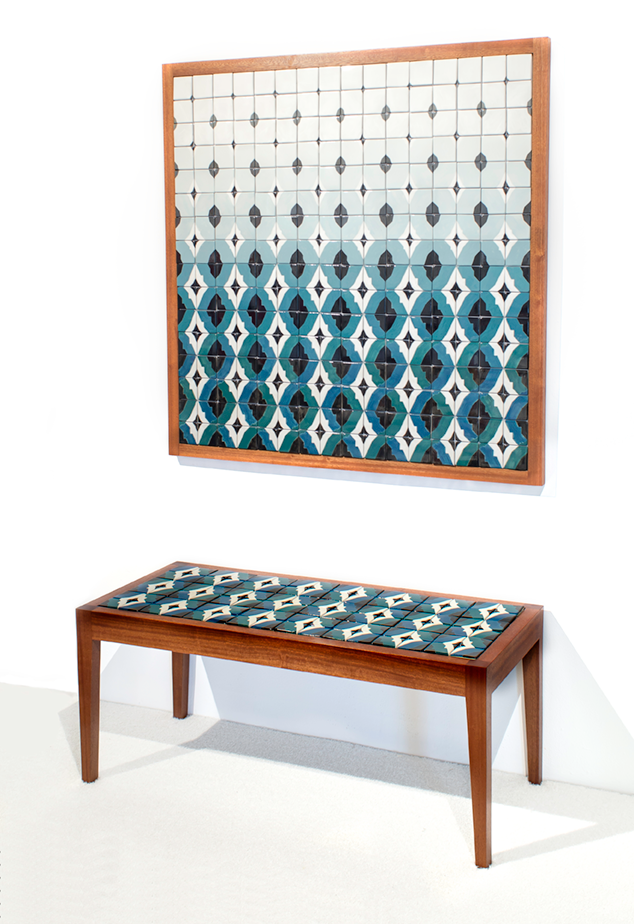 Annie Evelyn, Reticulatus, 2017. Wood, porcelain, foam. Wall Panel: 44 x 44 x 1-1/2 inches. Bench: 44 x 18 x 19 inches.
Annie Evelyn, Reticulatus, 2017. Wood, porcelain, foam. Wall Panel: 44 x 44 x 1-1/2 inches. Bench: 44 x 18 x 19 inches.
Annie Evelyn was resident artist at the Penland School of Craft in North Carolina from 2014 to 2017, and in 2016 was awarded The John D. Mineck Furniture Fellowship. She received both her BFA and MFA from Rhode Island School of Design (RISD), and has taught at schools including RISD, California College of the Arts, Parsons – The New School, Haystack Mountain School, and Penland School of Craft. Her work has been widely published, including a feature on the cover of American Craft Magazine. Evelyn had a solo show at the Houston Center for Craft, and in 2018 was a finalist for the Burke Prize for contemporary craft, where her work was included in an exhibition at the Museum of Art and Design (MAD). In 2019, Evelyn co-founded Crafting the Future, a collective of artists working together to provide equitable opportunities in the arts.
Artist Statement:
Joy, human connection, and self-discovery are at the center of my work. Growing up surrounded by Old Colony Furniture, my grandparents’ company, furniture ended up having a major role in my imaginary play world. They were also the most valued objects in our home and later, as I became an artist, it made sense that I would express myself through furniture.
My work has always been playful but not until losing my beloved stepfather, my father, and getting divorced within a span of two years did I realize creating furniture helped me cope with the pains of life by making people laugh and smile. Ever since, I have wanted to draw in as many people as I can and create joyful experiences. The intrinsic behavior of furniture, especially chairs with their interactive function, provides the perfect platform for engagement.
annieevelyn.com | Instagram: @annie_evelyn_furniture
Aspen Golann, Partially Draped Cabinet, 2019. Solid mahogany, bent laminated bars, hand enameled glass, brass hardware, finished with super blonde shellac, 50 x 48 x 18 inches.
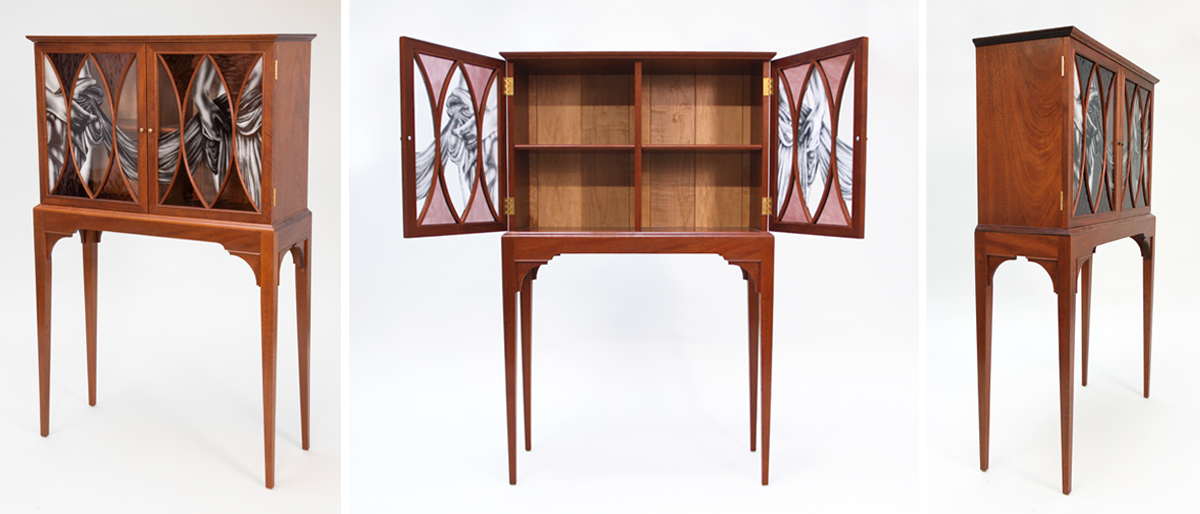
Artist Statement:
The DuPont family used their gunpowder fortune to shield themselves from charges of murder and rape. John Lawrence Manning, the 65th Governor of South Carolina, owned 670 enslaved African Americans making him the 6th largest slave owner of his time. Both were important patrons of early American furniture. Trained as an 17th-19th century furniture maker, I was called to consider the moral complexity of replicating the styles that adorned the halls of power in the early American period and to ask the question: Can their beauty be disassociated from the racism, classism, and misogyny of that time?
My response is playful and surprising: furniture that explores history, gender and power by manipulating American decorative art forms. I use inlay, marquetry, glass enameling and other traditional styles of image making to create contemporary pieces with classical roots.
I incorporate iconic markers of American craft, like ornate carving, reverse painting, and inlaid images, to celebrate historical craft while reckoning with its exclusionary history. My handmade furniture blends functionality with the female domestic experience, drawing on the many ways furniture fulfills stereotypical female gender roles. Furniture welcomes, hosts, bears weight, and is seen and not heard. Its sphere is domestic, its power is beauty, and its labor is invisible. My work blurs the line between furniture and figurative sculpture and between contemporary painting practice and traditional craft — simultaneously celebrating and critiquing the history of American decorative arts.
This piece blurs the line between furniture and figure sculpture — in this cabinet, the positioning of the female bodies and loose cloth transform the act of opening the doors into a disrobing. Merely by using the cabinet as intended, the user disrobes the figures and enters the internal space of the cabinet. The draped cloth imagery plays on classical early American Samuel McIntire (1757-1811) carvings that typically feature cloth hanging in catenary curves. The intent is to combine iconic decorative motifs with a functional cabinet form to explore female objectification, overuse, domestic labor, and sexuality.
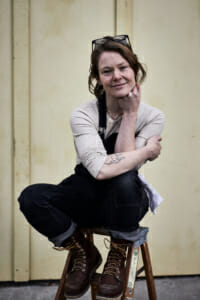
Aspen Golann is an artist and studio furniture maker, currently living in Penland, NC where she runs the Wood Studio at The Penland School of Craft. She specializes in 17th & 18th century style furniture which she blends with a background in fine art, sculpture, and textiles. Aspen holds a degree from North Bennet Street School in Boston, MA where she studied American Period Furniture. Golann’s work has been exhibited and published nationally. Among other accolades, she was awarded the 2020 John D. Mineck Furniture Fellowship by The Society of Arts & Crafts, Boston. She serves on the board of A Workshop of Our Own and as an ambassador to the board of Fine Woodworking Magazine.
aspengolann.com | Instagram: @aspen_golann
Duncan Gowdy, Style M, 2018. Walnut and brass, 60 x 48 x 4-5/8 inches.
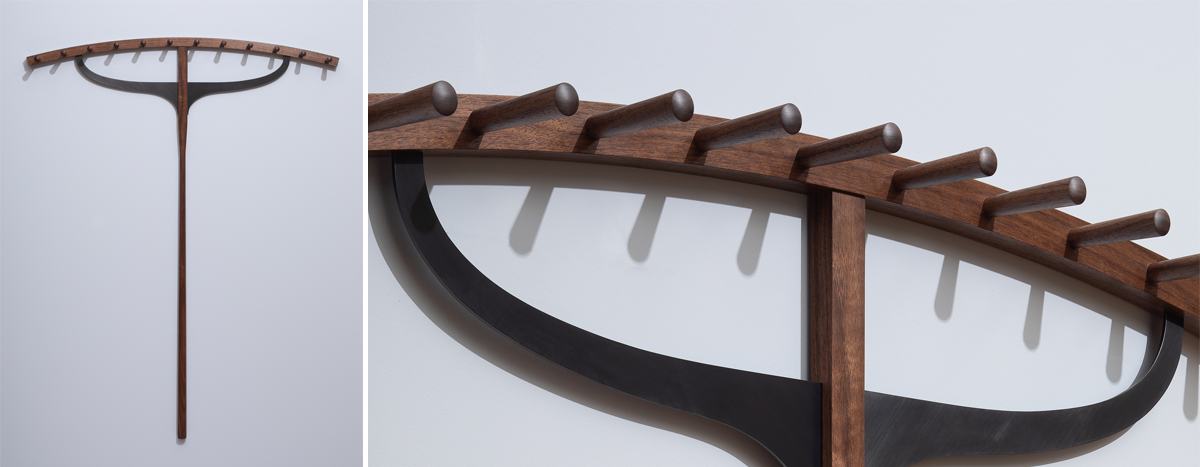
Artist Statement:
I enjoy finding alternative functional uses for objects. My intent is to find an object whose form will inspire the design and function of a piece of furniture. I often find objects for potential works while looking through books (and turning them upside down), going through old barns, looking through antique stores, or stumbling upon something around my house.
The basic forms of Early American folk art serve as inspiration for my object-inspired work. I combine several construction methods, from mortise and tenon, metal work, and turning, to both hand and machine shaping.
Style M is a coat rack inspired by old-fashioned rakes. The design combines Shaker aesthetics and New England ingenuity.
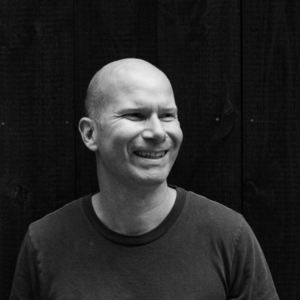
Duncan Gowdy has been blending his art background and woodworking to create one-of-a-kind and limited production studio furniture for the past 29 years. He holds degrees in furniture design from San Diego State University and the University of Massachusetts, Dartmouth.
duncangowdy.com | Instagram: @duncangowdy
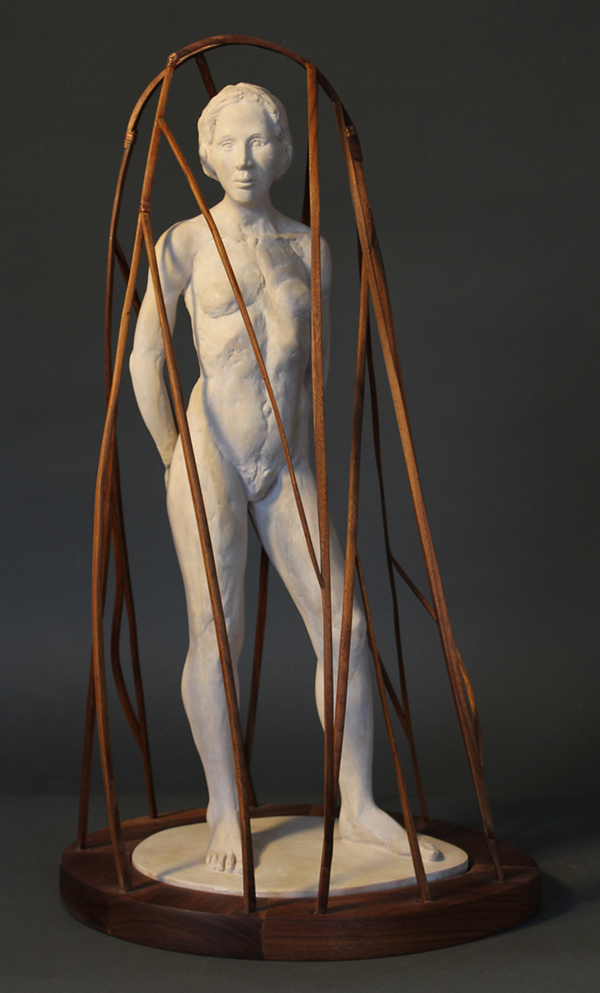
Elizabeth Heller, Shelter, 2018. Walnut and hydrostone (hard plaster) with casein patina, copper wire, 26 x 14 x 12 inches. Photography by Larry Francis.
Artist Statement:
I have studied, and continue to study, anatomy for many years, as I believe a full knowledge of anatomy is one of the keys to my self-expression. The delicate curves of muscles and bones, the armature of the human form, have an abstract beauty which informs the nude human figure.
These sculptures express my desire to make portraits of people and include wood elements to complete a poetic meaning. Each one of the models I work from is an interesting and complex human being. In working from them, casting them, and presenting their portraits, I am honoring their humanity and sharing it with the world. I attempt to describe the precious individuality of the people who have modeled for me. The beauty of the wood inspires me, and the grace and structural rhythms of growing trees relate to the expression of a human presence in my work.
Elizabeth Heller is an artist based in Philadelphia. She has studied at the Pennsylvania Academy of the Fine Arts and is also trained and has worked as a Union Carpenter.
Rebecca Juliette-Duex, Anyone for Tennis, 2020. Maple laminations, curly maple, brass rod, handwoven cotton/linen blend, handwoven cotton, 33 x 23 x 23 inches (each).

Artist Statement:
Textiles and wood are naturally absorptive materials and thus perfect for capturing sensations: from memory, the present moment, and the imagination. They are tools for telling stories, whether nostalgic or novel, and for creating a personal journal. Through weaving and woodworking, I am able to give shape, structure, and dimension to my own narrative and those of the people, places, and objects that have been vital contributors to it.
In particular, they give voice to the two most profound creative influences in my life: my maternal grandmother and grandfather. The combination of these elements allows for conversation about labor, and how I learned its value, by observing my hard-working grandparents for whom making was as essential as breath.
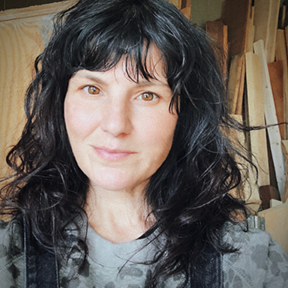
Rebecca Juliette-Duex was introduced to the value of craft at an early age. During visits to her mother’s childhood home in rural Western Pennsylvania, she observed how her grandparents found solace in their own handcraft; her grandfather in the woodshop and her grandmother with needle and thread or yarn. An immersion in weaving and woodworking at Haywood Community College has been an opportunity to build the skills necessary to honor the legacy of her grandparents. Rebecca’s work brings wood and fiber into conversation to tell the story of her own creative heritage and to inspire others to do the same.
Kristy Kún, Cambrian Memories Emergence, 2020. Turned madrone and handmade felt, 23 x 20 x 7 inches.
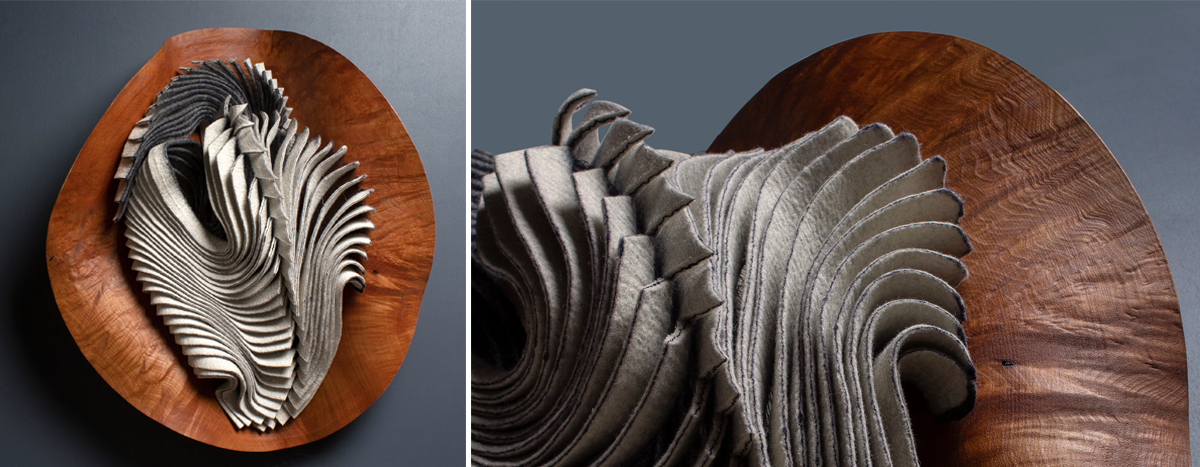
Artist Statement:
I am deeply moved by the transformative qualities of wool and plant fibers, which, when applied correctly, parallel environmental transformations; Birth, fruition, decay. Formations of water, earth, and sky, emerge as if breathing and alive. My hands translate this energy and these textures from nature into new form using altered methods of a timeless craft.
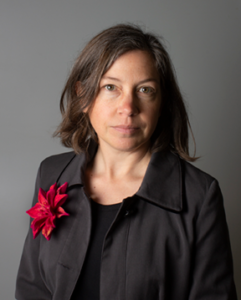
Kristy Kún forged her artistic mettle apprenticing as a woodworker and upholsterer during her early twenties. Dedicating thirteen years to building mortise and tenon constructed furniture from reclaimed wood, her respect for materials and craftsmanship in their reverential structure is planted deep. Her engineered layouts of complex joinery in fiber and finely finished surfaces resonate with the craftsmanship of a fine cabinet-maker while the organic forms that take rise from her hands capture a biomorphic fragility of the living world.
KristyKun.com | Instagram: @opulentfibers
Jill Kyong and Jim Christiansen, Hunger, 2020. Maple, beech, rice, acrylic, acrylic paint, Osmo Top Oil, latex paint, 7-1/2 x 72 x 5 inches.

Artist Statement:
Rice bowls can be symbols of either abundance or scarcity. Easily held in two hands, they might represent an offering of thanks or suggest food insecurity. The length of the box, the line of empty bowls, and rice just out of reach evokes the problem of hunger in an environment of plenty.
Jill Kyong received her BFA degree from the University of Minnesota, focusing on metal sculpture. She then got distracted by family and life and found herself in Little Rock, where she took up woodworking and taught classes at the Arkansas Arts Center. Jill decided to call herself a wood artist in 2018 and recently moved to Moscow, Idaho where she creates furniture, sculpture, and wall pieces.
jillkyong.com | Instagram: @jill.kyong
Jim Christiansen makes beautifully sculpted wood art with finely crafted surface enhancements. Jim has exhibited his work nationally and internationally. He has also traveled around the world teaching others about critique and design. As a mentor, he spends a lot of time in his studio working with individuals who share his love of art and want to learn more about his process.
Eric David Laxman, Saint Sebastiane, 2014. Plywood, steel, found objects, 45 x 30 x 8 inches.
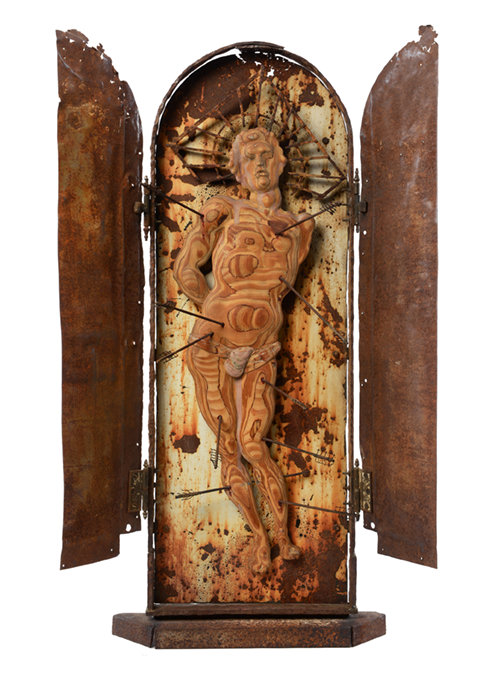
Artist Statement:
Sculpture is a personal journey and exploration that helps me interpret and make sense of the world around me. I have physically wrestled with hard stone and metal in order to develop a means for integrating disparate elements into coherent, abstract, and figurative compositions. This is fueled by a desire to express the themes of transformation, growth, balance, and movement. It is my intention to create sculptures that seem spontaneous and inevitable using a process that is extremely labor intensive and deliberate. Seeking is a constant; I aim to transform my materials while at the same time respecting and acknowledging their unique properties and their raw fundamental nature. This duality, a recognition of the discreet parts and the creation of a new unified whole, is the essence of my creative process.
Cutting, drilling, splitting, and breaking marble and granite; forging, welding, and reassembling steel, bronze, and stainless steel has become a metaphoric struggle for achieving balance.
Found objects have a unique and mysterious history and, when combined together, can create a new and equally compelling story. Reacting spontaneously to the shape, textures, and essence of these raw materials, I am able to construct new realities and access fantastical and playful realms.
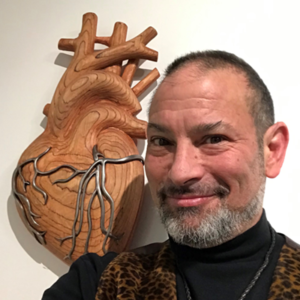
Eric David Laxman is a multimedia artist who lives and works in Valley Cottage, NY. He graduated from Tufts University with a BS in Chemistry and attended the School of the Museum of Fine Arts in Boston, MA. He has exhibited his diverse works throughout the metropolitan area and nationwide. Laxman was a Semi-Finalist for the Mario Cuomo Sculpture Competition and has completed numerous public sculpture commissions. His custom furniture and sculptures have been featured in publications including The New York Times and The Artful Home.
ericdavidlaxman.com | Instagram: @ericlaxman
Phillip Mann, Ray Gun 001, 2018. Maple, aluminum, nylon, 11 x 15 x 8 inches.
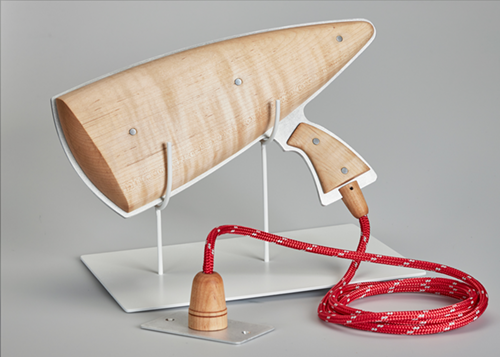
Artist Statement:
My work exists at the nexus of art, design, and craft. The merging of these creative disciplines allows for limitless possibilities. The personal, expressive nature of fine art is enhanced by the disciplined research and deliberation of design and implemented with the skill and attention to detail of the highly trained artisan. This combination also encourages innovation, as one discipline challenges the assumptions and traditions of another, and the struggle results in a piece of work that is the purest expression of my idea.
My current work explores my longtime interest in humanity’s ability to communicate meaning, ideas, and values through the objects we make.
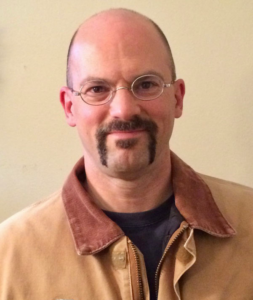
Phillip Mann is a maker and educator based in Corvallis, Oregon. With a background in furniture making and sculpture, Phillip now teaches design and fabrication courses at Oregon State University, and his current creative work often focuses on investigating synergies between traditional analog and digital making modalities.
phillipmannstudios.com | Instagram: @phillip.mann.studios
Jillian Matthews, Proliferation, 2020. Wood, acrylic medium, paint, oxidized brass, leather, 14-1/2 x 1-7/8 inches.

Artist Statement:
Healthy cells are being quietly hijacked, invaded, and ultimately destroyed by an unfamiliar contagion. Proliferation of disease, misinformation, and increasing fear of the unknown has gripped the world. We seek protection from the unseen.
My work is intended to be a manifestation of this invisible enemy. The rough, black spheres of varying scale cascade down the body grasping smooth planes of wood. The forms appear to be growing and multiplying as they spread across the body. For the wearer it evokes questions of how we protect our bodies from infection and how we shield our minds from anxiety. Does this piece function as a black and amber colored amulet for acquired immunity? Does it brand a contagious person? How do we balance an individual’s liberties with the health of society at large?
Through my work I explore concepts of control and protection versus freedom and risk. I consider how we cope with uncertainty, how we perceive others, our fear of losing control of our bodies, and, ultimately, how we face our own mortality.
Jillian Matthews received her Bachelors of Science in Interior Design from Philadelphia University in 2002. She worked for several years with an architecture firm in Philadelphia, PA before deciding to pursue other creative interests. She received her MFA in Jewelry + Metals at the Rhode Island School of Design (RISD) in 2013. She is also an exhibition designer at the Philadelphia Museum of Art.
Delmar McComb, Interflow Table, 2019. Locally collected walnut, steel, bismuth, brass, 38 x 19 x 18 inches.

Artist Statement:
I am interested in challenging the notion that culture and nature exist as separate things. This dualistic framework has led humans to abuse the ecosystems which we inhabit, overexploit resources, and harm each other and the beings around us.
Materials are the basis of my work. Wood collected from creek beds, forest floors, or harvested from overly dense patches of growth connects me to the landscapes where I work, encouraging me to use materials in a way that is healthy for both myself and my environment. Processed materials like steel, aluminum, glass, and plastics remind me of the unique ability of our species to combine types of matter into new and beautiful things.
My furniture and objects are the products of blending, shaping, disrupting, and conjoining these traditionally dichotomous groups of materials, and, in so doing, manifest a more reciprocal framework. By relating the natural environment directly to the body, and using materials in a more symbiotic way, I am suggesting that we exist not as separate entities, but as part of a holistic system.
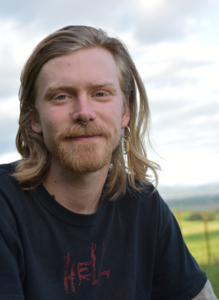
Delmar “Mac” McComb is a furniture designer and artist based in San Francisco. He is a 2020 graduate of the BFA Furniture program at the California College of Arts.
macmccomb.com | Instagram: @mac_thewizard
Tom Neville, Caned Seat, 2020. Binder cane, walnut, 19-1/8 x 30 x 19-3/4 inches.
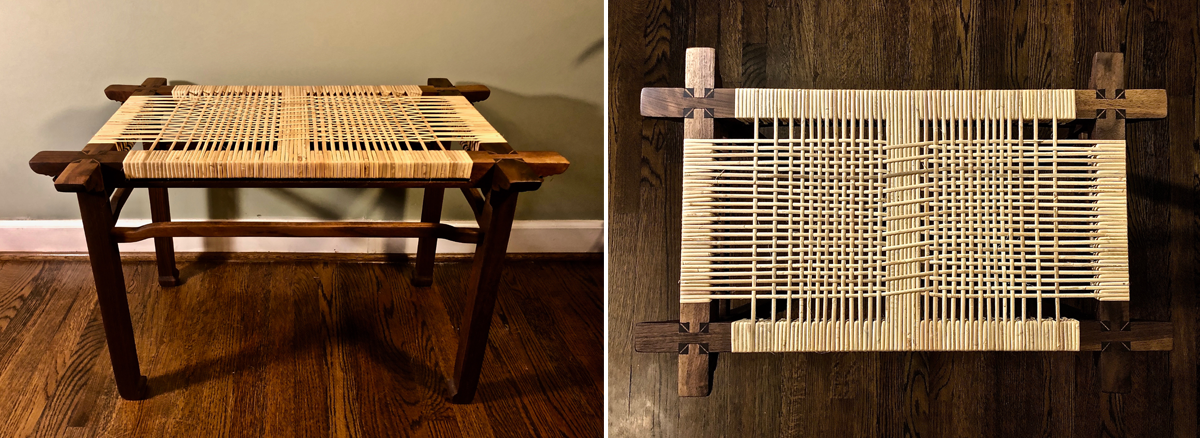
Artist Statement:
Caned Seat reflects my interest in classic Chinese furniture, Japanese joinery, and woven seats.
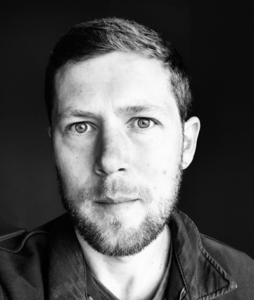
Tom Neville studied history and education and spent nearly a decade teaching, most recently in France. He moved to California in 2017 where he settled briefly on a small floating vessel in Sausalito, a short stroll from a marina where a volunteer crew worked daily on a tall ship they built from scratch. Tom volunteered a few days, offering little but absorbing much, before moving again after his boat rental expired, seeking life on land and ending up in Berkeley. Inspired by the tall ship work and the subsequent exposure to the variety of talent and tools floating around the East Bay, Tom decided to build the one thing he’d actually thought about building for years: a gourd banjo.
He entered the Caning Shop in Berkeley, which advertised gourds on their exterior wall. While he built something approximating a banjo he mostly ended up caning a lot, spending the next year working for the author of The Caner’s Handbook, Jim Widess, and learning about weaving, chair design and repair, and furniture history.
Around the same time, Tom discovered Jay van Arsdale’s Japanese Woodworking courses at Laney College in Oakland. He took Jay’s courses and spent every free minute between classes tuning his tools and redoing the joinery he’d struggled to assemble during class. Tom had an opportunity to work with Jay in his shop before leaving California to start his own shop and a small farm in Virginia’s Piedmont. In addition to restoration work, Tom is now designing and building furniture, Shoji screens, and traditional Japanese garden structures in an old horse barn an hour west of Washington, DC. Later this year, Tom will begin offering studio sessions to learn caning and the introductory basics of Japanese hand tools and joinery.
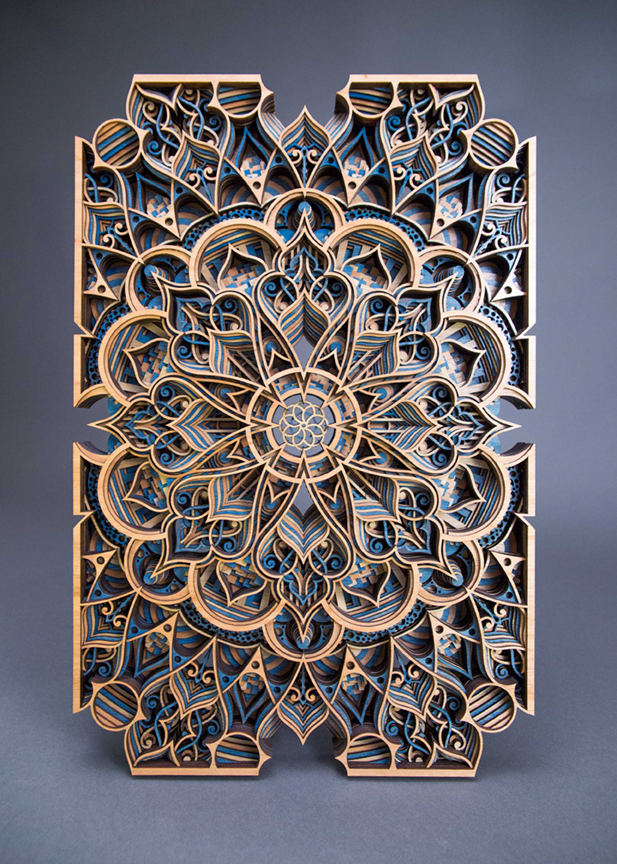
Philip Roberts, Ansari, 2020, Wood and pigment, 24 x 16 inches
Artist Statement:
I rely heavily on my ability to use modern day technologies to bring my meticulous designs to life. These abilities are born from my love of art, design, machinery, and a long history of traditional woodworking. Art should bring life to a living space and wood should bring the warmth.
Philip is a happily married, full-time artist, from rural New Jersey. In 2017, Philip started creating wooden artwork which would require a mechanical aptitude, a heavy design sense, and hours of hands-on work in the woodshop. The challenge has proven to keep him on his toes and he continually looks for ways to push the medium a bit further. Philip had a childhood surrounded by farmers, carpenters, engineers, and a freedom to build things. This perfect cocktail of ingredients was perfect for someone who loved to tinker, create, destroy, and start over. This childlike process has never stopped.
philip-roberts.com | Instagram: @fil_roberts
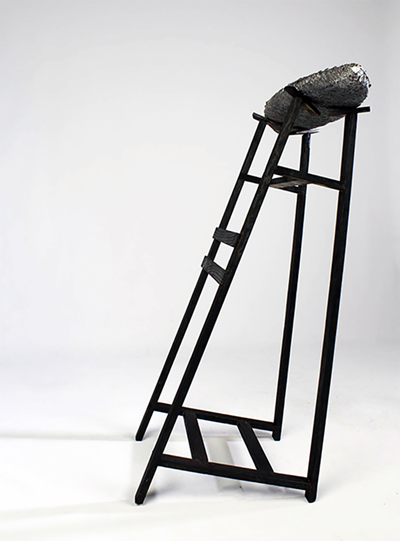
Brittany Rudolf, Washed Ashore, 2015. Cast-aluminum, charred ash, iron oxide powder, water, 38-1/2 x 28-1/2 x 16-1/2 inches. Photography by Kurt Lee Nettleton.
Artist Statement:
Primarily using reclaimed materials to construct surreal and perhaps even post apocalyptic landscapes, my work implicates stewardship and interconnectedness as the primary sites for reflection. I apply furniture and architectural forms as stand-ins for the body to define how boundaries shape our identities and protect our vulnerabilities. The changes in scale and material guide the intimacy of the interaction. Derived from personal stories, these often precarious forms become symbols to document and reflect on our shared hopes, fears, and struggles while the intricately embedded symbols invite you to join in the search for meaning.
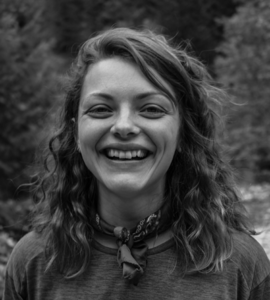
Brittany Rudolf draws on the traditions of woodworking, sound art, and textiles to create eclectic experience, installation, and objects exploring boundaries of land and body. Rudolf has been a Resident Artist for GLEAN and The Vermont Studio Center. She is a co-founder of Material Loop, a multidisciplinary studio and art space in Portland, and Cumulus Cooperative, an online market for handmade goods. She holds an MFA in Applied Craft + Design from the Oregon College of Art & Craft/Pacific Northwest College of Art and a BFA in Furniture Design and Sculpture from Herron School of Art and Design.
brittanyrudolf.com | Instagram: @strawbrtny
Abraham Tesser with Olena Nebuchadnezzar, Wren (The Gift), 2017. Walnut, oak, maple, shellac, 2 quilts, 24 x 17-1/2 x 12 inches.
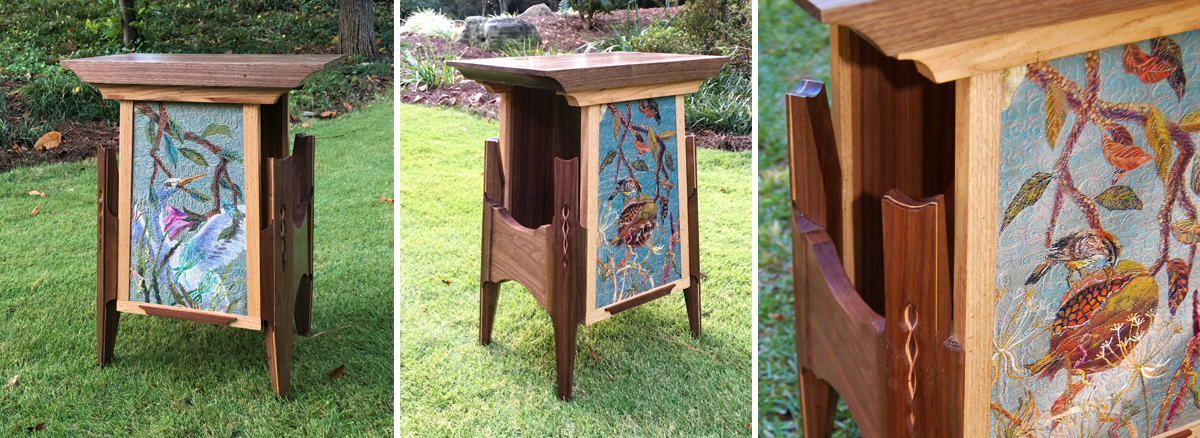
Artist Statement:
I am a furniture maker/designer and woodworker. My work often incorporates sensuous curves and visually interesting veneers. I work alone and have an intense relationship with most pieces. Every piece requires some struggle in design and fabrication. And, that struggle tends to individuate the piece and intensify the joy of seeing it completed. When I am not in the studio I enjoy talking about, writing about, and promoting wood art.
The piece in this show represents a first time collaboration for me. It is a collaboration with quilt maker Olena Nebuchadnezzar. I was making a gift for a friend who is a quilter. My friend introduced me to Olena’s work. I was overwhelmed with its beauty, attention to detail, vivid colors and nature themes. So, I was thrilled when Olena agreed to do the panels. What ensued was a series of emails in which we exchanged sketches of the piece from me and sketches of the panel from Olena.
Olena and I have done three pieces together, but we have never personally met or even talked on the telephone! The piece you see here is one of the results. I am delighted with how her work enhances my work. We commented on and made suggestions regarding one another’s work but the quilts are unambiguously Olena’s work and the woodwork is unambiguously mine. The collaboration encouraged me to think about forms that might enhance the marriage of textile and wood art; a line of thought I would not have engaged in without it. And that has enriched my artistic vocabulary. I have profited artistically from this collaboration and I hope that Olena has as well.
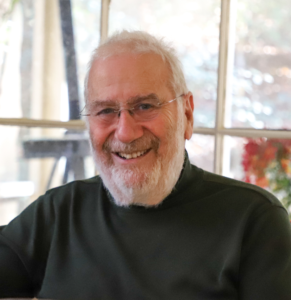
Abraham Tesser is a furniture designer and maker from Athens, Georgia. He has shown his work nationally, curated several exhibitions, and published his writing in magazines including Fine Woodworking, American Woodturner, and Woodworking Magazine.
Olena Nebuchadnezzar earned her BFA degree at Boychuk Art and Design Institute in Kiev, Ukraine, with an emphasis in book illustration and advertising design. She always loved textiles, and eventually became a self-taught fiber artist. She was born and raised in Europe and is also an extensive traveler; she is therefore deeply influenced by different cultures. She spends many hours outdoors studying light, colors, patterns, and structures in nature.
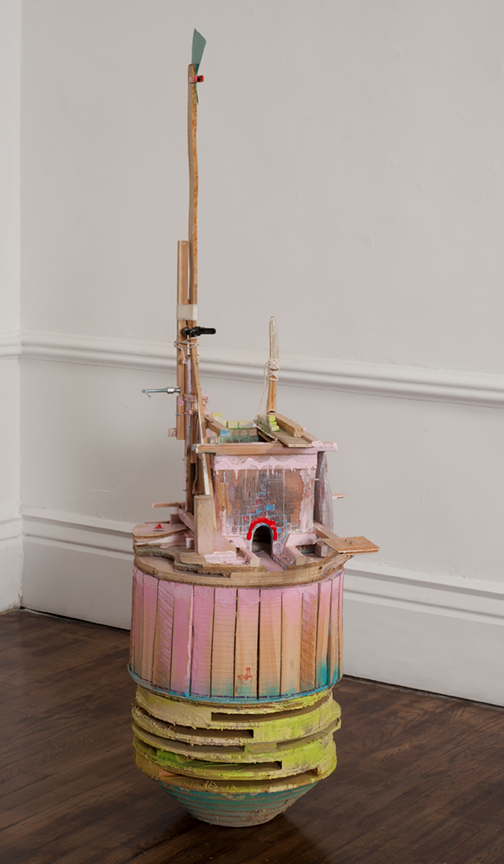
Travis Townsend, Smallish Raft Tower, 2010-2019. Wood, plywood, paint, clamps, paper, string, clay, graphite, 60 x 19 x 21 inches. Photography by Mary Rezny.
Artist Statement:
Sketched, built, carved, drawn-on, disassembled, rebuilt, painted, tethered, clamped, tinkered-upon, and appearing as useless vessel forms (some of which have been evolving for over a decade), these sculptures play off the forms of tools, toys, and boats, and have layers of mark-making and painting that contribute to the building of a vague history.
Some are ruminations on the idea of an ark. And they aim to be (in their own idiosyncratic way) well-made and innovative in form. Perhaps they are beautiful.
These process-oriented works take a winding path to completion, evolving from continuously redrawn sketches and traveling through many transformations before being cut apart, reassembled, and reworked. Parts are often transplanted, left behind, or recycled. Curious inspection and patient observation reveal previously unseen drawings and room-like interiors, many with small chairs and ladders, that suggest a narrative of previous habitation.
It’s not lost on me that my studio is the garage. And I’m in the studio at night tinkering with memories and thinking about the things that men build. Have we built good things? Am I building a good thing? Is this personal and artistic self-doubt? Well, partially. But more importantly, I hope the work communicates a serious and intentional examination of the creative act and of the nature of “building things” in general.
Then again……….it could just be about the pleasure of making and re-making. My creative process is one of experimentation and re-use, and the artworks wear their truth (the history of their own creation) “on their sleeves.”
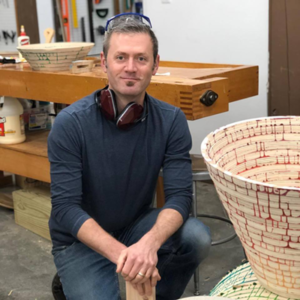
Travis Townsend draws, builds, rebuilds, paints, and tinkers upon wood and mixed media sculptures in his Lexington studio. Travis studied at Kutztown University and Virginia Commonwealth University and has presented solo exhibitions at The Parachute Factory, Washington State University, Manifest Gallery, Doppler PDX, Southwest School of Art, Weston Gallery, and the New Arts Program. His work has been included in numerous group exhibitions and appeared in the publications New American Paintings, The International Drawing Annual, and The Penland Book of Woodworking. He has been a resident artist at Penland School of Craft, Oregon College of Art and Craft, Vermont Studio Center, and Peters Valley School. Ongoing projects include collaborative sculptures, drawings, and installations with the SmithTownsendCollaborative.
travistownsendart.com | Instagram: @travistownsendart
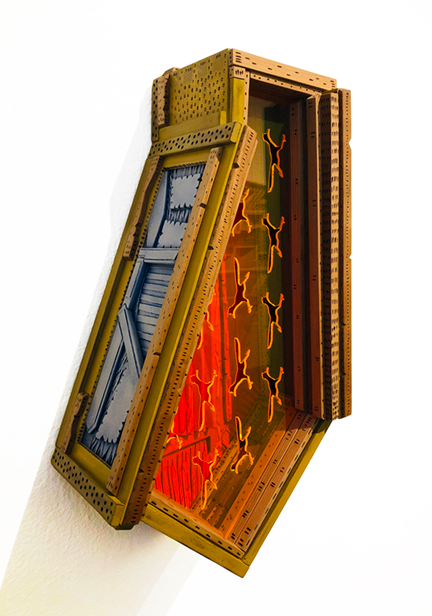
Ruby Troup, Tail Light, 2019. Wood, laser cut acrylic, Plasti Dip, mixed media, 20 x 10 x 7 inches.
Artist Statement:
My works are surrogates for me. They are proxy bodies. My work is autobiographical—a collection of short stories and time lived.
I grew up in rural Southern Indiana; a world of calloused hands, unforgiving sunburns, rusted relics, and groves of poison ivy. As a child left largely to my own devices, I was forced to create ways of entertaining myself. This meant much of my time was spent out in the landscape, avoiding hornet’s nests and looking for adventures. I invented elaborate and constantly shifting narratives that allowed me to break free from the constraints of my reality. During these adventures I collected small objects; interesting twigs, a stray precious geode, maybe a shed cicada skin if the season was right. I then used these as triggers to later remember the stories I had created. When I first began these expeditions, I couldn’t read. I used my collections as a kind of language so that I could relive my experiences again and again. This was a private act, a way to record myself that felt safe because only I could read these words.
My artwork is an extension of this practice. Serving as both map and legend, my work is a record of my lived experience. With surfaces layered with mark-making, relief, overlay, and color, each of my objects is densely packed with the allegories and symbols that spell out my stories. My hope is that people can see themselves in some of the work, and relate.
During her childhood spent running barefoot through the Indiana backwoods, Ruby Troup used just the weirdest sort of trash to build worlds and tell stories. This foreshadowed her current art practice. Ruby uses wood to create three-dimensional work with dense, ornate surfaces that suggest narratives drawn from her formative years, and on the environments in which she has lived. A move from back East to the Southwest informs her current work that explores the shifting landscapes of time, place, and memory. Ruby lives and works in northern New Mexico and holds a BFA from Herron School of Art and an MFA from Virginia Commonwealth University.
Jason Turnidge, Factory Low Stool, 2016. White oak in oil and bronze in pewter patina, 18 x 15 x 15 inches.
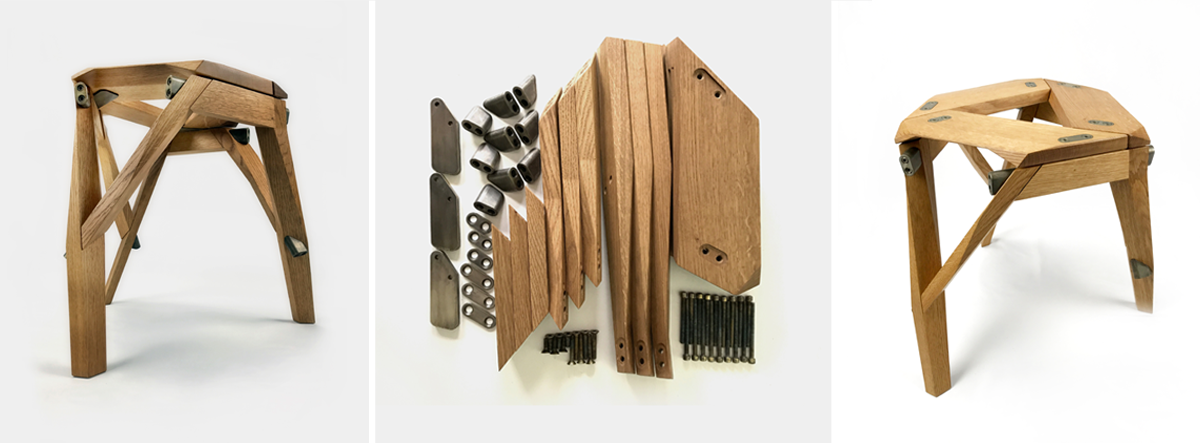
Artist Statement:
I test the effects of contemporary manufacturing technologies and explore post-industrial craft through modular furniture. I examine the domestication of factory-based machinist techniques to make tools for contemporary life.
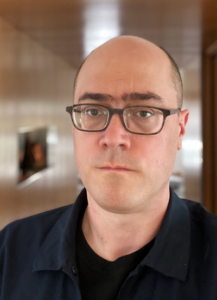
Jason Turnidge founded Turnidge Industries in 2016 as a design and manufacturing studio. Prior to establishing his studio, Jason worked as an architect with Westlake Reed Leskosky / DLR Group from 2012-2016, and as a Design/Maker at Thom Stauffer Architects from 1997-2008. There, he participated in teams that developed work that has been recognized regionally and nationally with numerous AIA and design awards. Turnidge received his Bachelor of Architecture degree from Kent State University and, in 2002, he received a Master of Architecture degree from the University of Pennsylvania. He is adjunct faculty in architecture at Kent State University.
turnidgeindustries.com | Instagram: @turnidge.industries
Nina Valdera, Fragments, 2020. Wood, metal, dichroic glass, and LED lights, 24 x 24 x 8 inches.

Artist Statement:
My ideas are connected to spirituality and how light represents life. My sculptures are abstract in design and are created with wood, LED lights, and acrylic sheets. My work is constantly changing as I experiment with materials and searching for new ways to reflect and diffuse light. My vision is about creating a presence that illuminates a space for a tranquil and meditative experience.
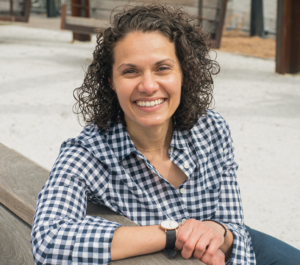
Born and raised in Philadelphia, Pennsylvania, Nina Valdera creates light sculptures using geometric forms constructed from wood which are illuminated using acrylic sheets and LED lights. Her inspiration is connected to spirituality and the calming effects of nature. She creates meditative spaces for her viewers by using transitioning colored lights, giving the perception that time is slowing down. She was awarded a micro-grant from Mural Arts of Philadelphia for Site Sound: Revealing the Rail Park. Her work has been exhibited in group shows at Da Vinci Art Alliance, and The Clay Studio, Philadelphia, Pennsylvania. Nina is an MFA Candidate for Visual Arts at Vermont College of Fine Arts, Montpelier, VT. She received her BFA in Art Education from Moore College of Art and Design.
ninavaldera.com | Instagram: @nina.valdera
Cindy Pei-Si Young, Pinned at a Tipsy Angle, 2021. Teak, cotton, cotton clothes, 4.5 x 5 x 3 inches.

Artist Statement:
As a woodturner, I was inspired by Esherick’s work when I visited the museum back in 2019, especially by the beauty in everyday life objects: the mug, the clothes hook, the ladle, etc. Therefore, I chose to make an everyday object: a pincushion.
Bringing Eastern elements into my work has been an ongoing theme for a couple of years. Pinned at a Tipsy Angle was inspired by a Buddhist ritual conch. While I was fascinated by the form, I also wanted to create lines which not only flew throughout the design but also redefined the edge. I sought to bring beauty into this mundane object as a tribute to Esherick.
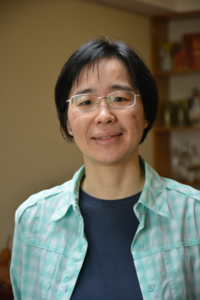
Cindy Pei-Si Young is a woodturner from Taiwan and obtained her MArch from Rhode Island School of Design. Her work has been included in several juried group exhibitions, including Nature/Nurture (AAW POP Exhibition), Step Up to the Plate, and Continuum (AAW Member Exhibition) at the Gallery of Wood Art in St. Paul, Minnesota, and Turnabout: Women at the Lathe at the Arrowmont School of Arts and Crafts in Gatlinburg, Tennessee.
Cindy Pei-Si started woodturning as a hobby and transitioned to teaching. She has been a woodturning instructor for several schools in Taiwan. Although she always looks into western techniques to improve her turning, she aspires to create the work which reflects her Eastern background.
cindypeisiyoung.com | Instagram: @young_woodturner
Stephen Yusko, Western Reserve, 2019. Wood and steel, 7-1/2 x 36 x 3-1/2 inches.
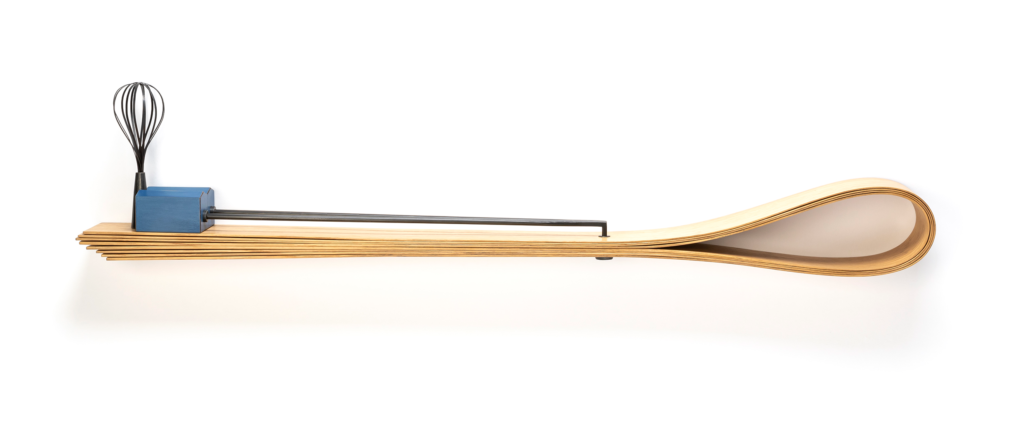
Artist Statement:
I am intrigued by the structure of things — the underside. The bones of buildings, piers, arches and trusses of bridges and roadways, and the tools and equipment used to build them tell a story. The shapes, textures, and connections of the materials I use are part of that story. My work expands on this visual vocabulary by exploring themes of balance and tension; distance and perspective, and concepts of home.
This piece, titled Western Reserve, is part of a series of wall sculptures that were inspired by drives across the US, from Ohio to California and back, for a Windgate artist residency at San Diego State University.

Stephen Yusko lives and works in Cleveland, OH, where he creates forged, machined, and fabricated steel vessels, furniture, and sculpture. Yusko has taught at several schools and universities, including Haystack School of Crafts (ME), Penland School of Crafts (NC), and State University of New York (SUNY) at Purchase, where he was a Windgate Artist-in-Residence; and served for nine years as a member of the Board of Trustees for the Haystack School of Crafts. He has exhibited his work widely including the Metal Museum (TN) and the Ruthin Craft Centre (Wales, UK) and is the recipient of three Ohio Arts Council Individual Artist Excellence Awards and a Cuyahoga County Creative Workforce Fellowship Award.
stephenyusko.com | Instagram: @stephenyuskostudios
Explore Artist Videos & Events
Christian Burchard: Riff on a Donso Ngoni (Mali)
Kristy Kún & Christian Burchard: Cambrian Memories Emergence
Brittany Rudolf: Washed Ashore
Wood And… Opening Reception
Wood And … Catalog
This 74 page, full-color catalog is a comprehensive look at Wood And…, WEM’s 27th Annual Juried Woodworking Exhibition. This publication captures the range of material experimentation and different perspectives, creative visions, and fields represented in this year’s show through imagery for each of the 26 artworks alongside artist statements and biographical information. The catalog also includes a welcome from WEM Executive Director Julie Siglin and an introduction from Emily Zilber, WEM Director of Curatorial Affairs and Strategic Partnerships.

